Everything you need to know
Read everything you need to know about the World Snooker Championship HERE:

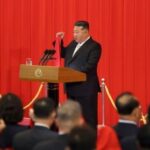
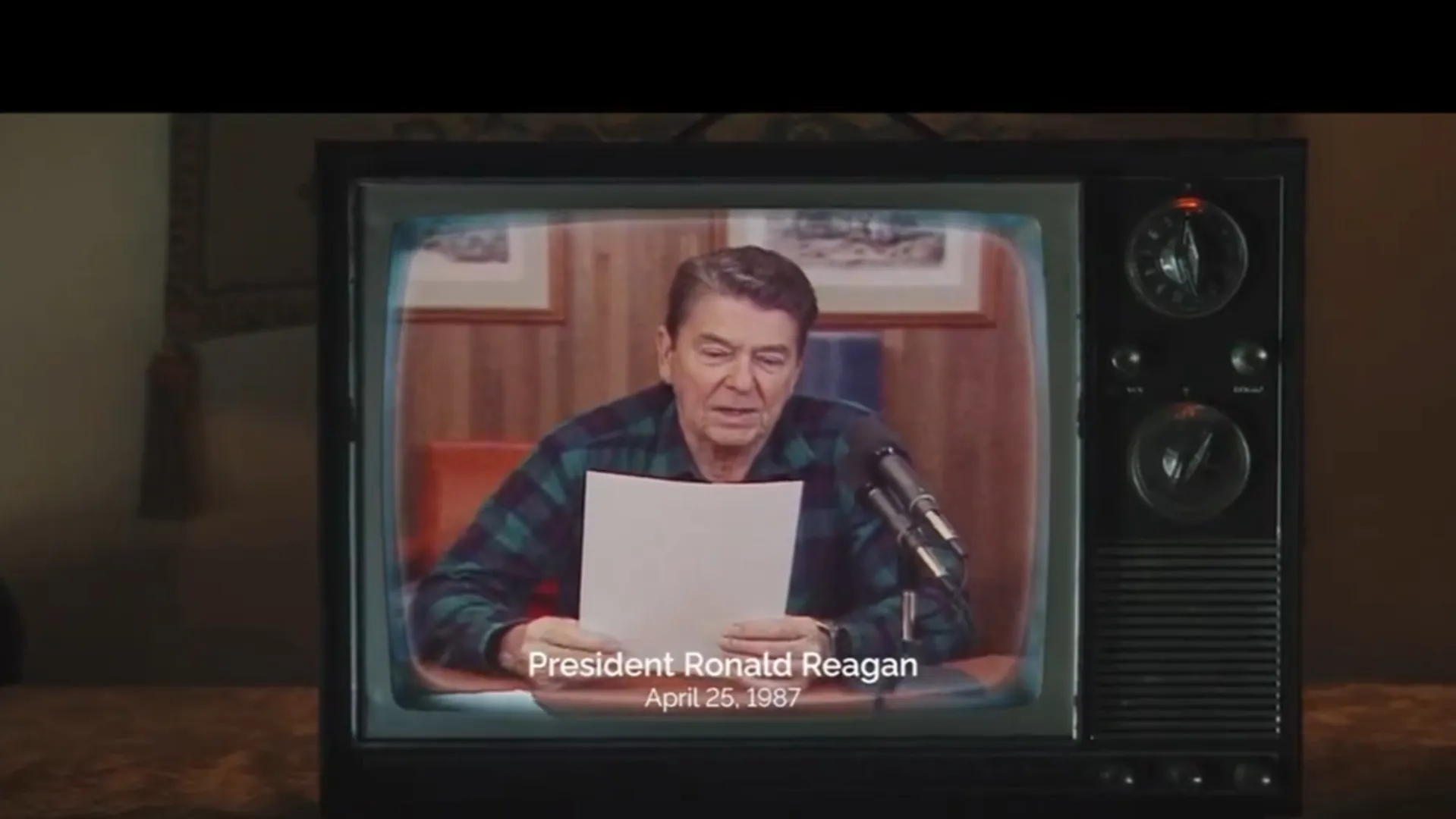


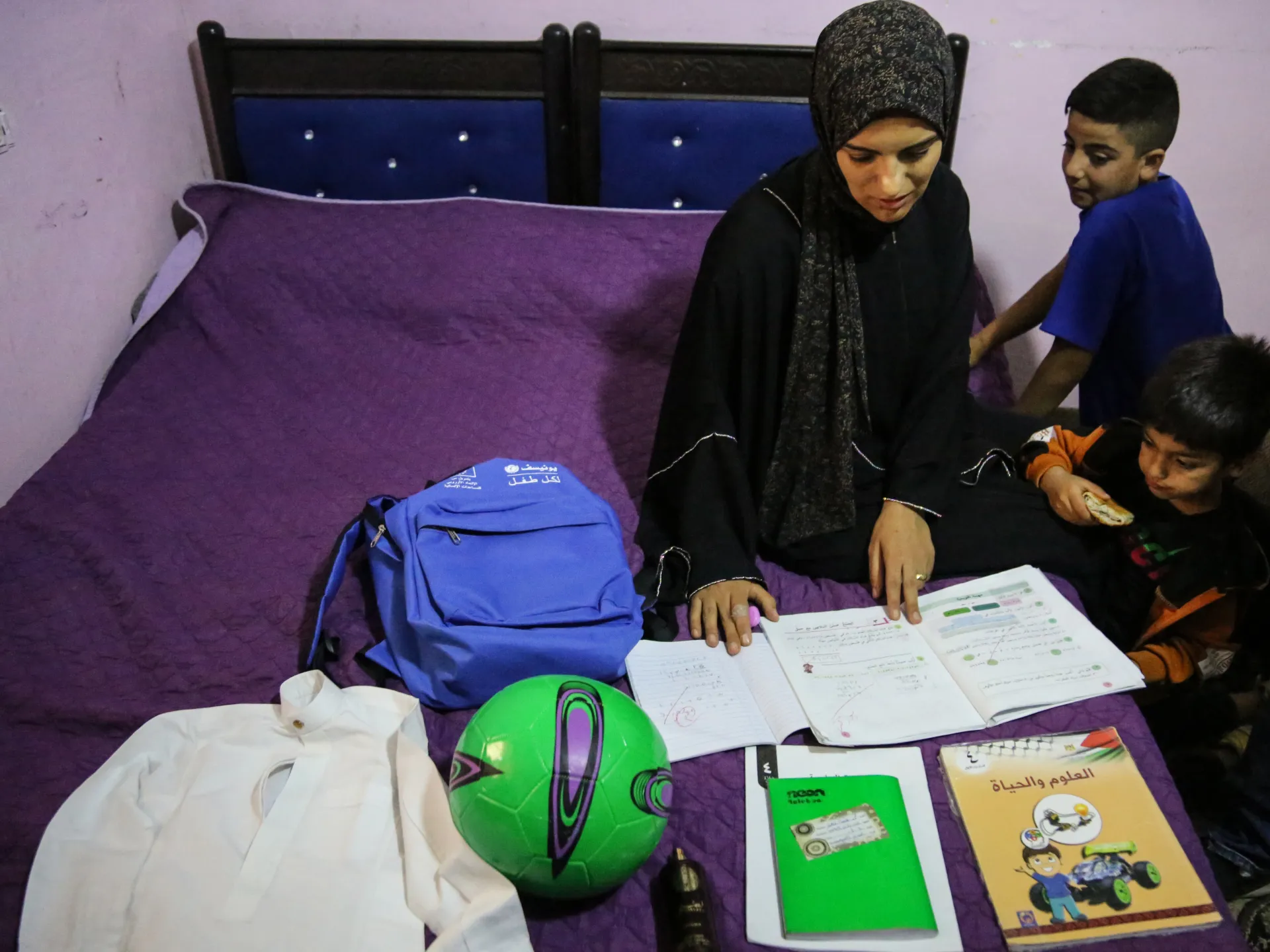

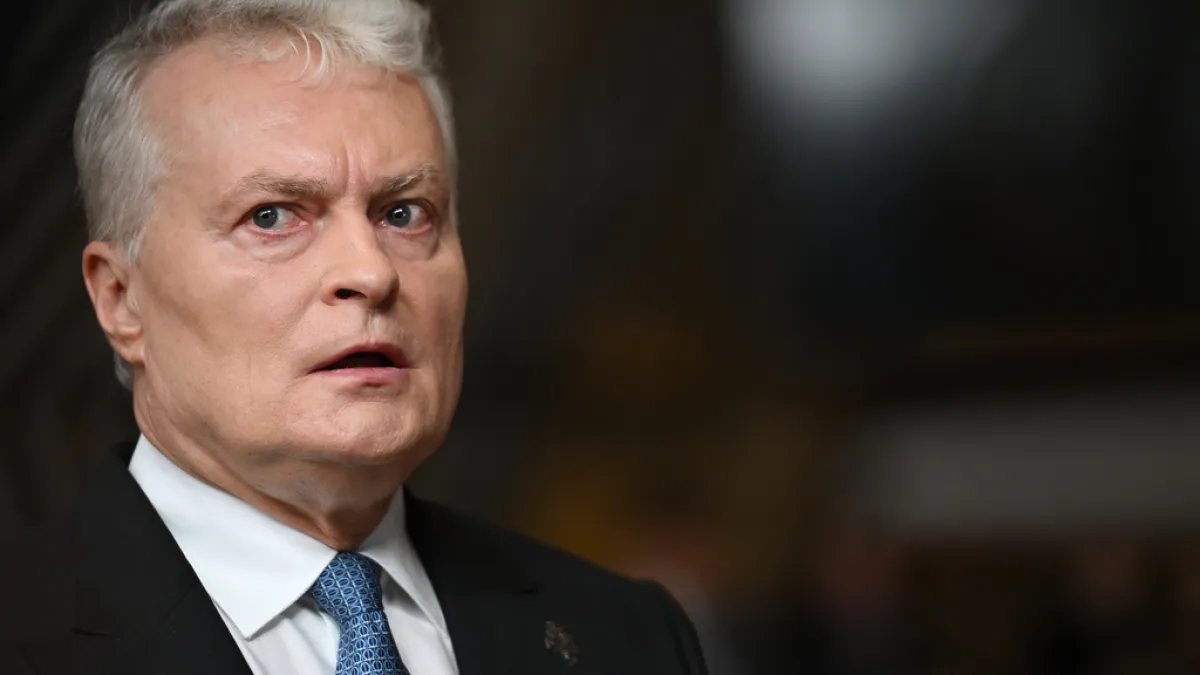




The 35-year-old could become the first player to top £2m in prize money in a single season if he wins the world title, the prize for which is £500,000.
Trump, speaking to BBC Two, said: “Shaun was in a world of his own for four or five frames and I was a little bit worried, but I had to back myself in that last frame.
“In the past I’ve been a bit hard on myself but I’m a lot stronger mentally and I’ve learned to appreciate the losses and use them as motivation.
“I’m a lot more confident this year, I’m hitting the ball a lot better. I probably have a bit more belief in myself and I feel a lot more calm.”
On his chances of winning a second world title, he added: “Pretty much every single day [you play] now you are looking to that next session every time.
“It’s only going to get tougher, we’re not even halfway there now. It was an extremely tough draw to be playing Shaun at this stage, with the form he was in.”
More to follow.
Israel has bombed Beirut's southern suburbs, part of a series of attacks across Lebanon that violate the ceasefire deal
Source link
In the past few weeks, demands for the deployment of a protective force in Gaza and the West Bank have resurfaced. They have come from health professionals and medical organisations, Palestinian NGOs and even Arab civilians. Last year, the Arab League and human rights organisations also called for a peacekeeping force to be sent to Gaza.
In light of the global normalisation of livestreamed genocide and the political reluctance to enforce international law, this demand represents a bare minimum measure to safeguard Palestinians against unimaginable horrors.
The demand is firmly grounded in international law. In Gaza, a peacekeeping force could advance the duty of states and the United Nations to protect a people facing genocide, war crimes and crimes against humanity under investigation at the International Court of Justice and International Criminal Court. In both Gaza and the West Bank, such forces could support the process of ending the occupation, as demanded by the UN General Assembly and the International Court of Justice.
And yet, the demand for a protective force faces major challenges. The crucial question is: Can they be overcome?
The situation in Gaza and the West Bank has reached unprecedented urgency and extremity. Military pressure from armed groups in Lebanon and Yemen exerted in an attempt to protect the Palestinian people did not manage to stop the atrocities, and the Lebanese and Yemeni people have paid a heavy price.
That is why an international protective force is urgently needed. Its deployment would fulfil what the Palestinian population is asking the international community to do: to protect them. This force would serve as a “human shield” – not in the derogatory sense weaponised by the Israeli military to justify its genocide by framing the entire Palestinian population as human shields but in the sense of a literal peaceful barrier between the Palestinians and their annihilation.
Its presence could mean the difference between life and mass death for civilians who have faced a year and a half of bombardment, siege and starvation.
Moreover, this force offers a critical alternative to more sinister “solutions”. As Israel escalates its genocidal campaign, imposing conditions designed to destroy Palestinian life, the United States has floated the idea of deploying its troops to Gaza to “take it over”.
Such a move would constitute an illegal US invasion of Palestine, further entrenching colonial violence under the guise of maintaining “stability”. By contrast, forces tasked with the responsibility to protect Palestinians – and not imperial and colonial interests – could provide a legitimate, internationally grounded countermeasure.
Deploying protective forces through a mandate of the UN requires a UN Security Council resolution. The US will most definitely veto any attempt to create such a force, just as it has struck down various ceasefire resolutions, in effect enabling genocide and blocking any effort to uphold even the most basic principles of humanity under the UN Charter.
The situation is undoubtedly growing more hopeless under a US administration that is actively supporting the mass expulsions and deportations of the Palestinian population from Gaza. US President Donald Trump himself has described the Gaza Strip as a “demolition site” and expressed his desire for the US to turn it into the “Riviera of the Middle East”.
Since a resolution calling for a protective force would be blocked at the Security Council, the alternative is for a multilateral call to action through the UN General Assembly. There, too, US coercive power heavily influences votes – including that of the Palestinian Authority – but it is still a viable option. The earliest such a move could happen is at the next session of the General Assembly in May and would require immense diplomatic pressure.
A vote for a protective force by the General Assembly would not be binding and would require approval by the Security Council. However, it could help create a coalition of countries signalling their willingness to intervene with concrete protection measures in defence of Palestinian life after 19 months of empty words without tangible action.
Another challenge is that the mechanism of deploying peacekeeping forces has long been regarded with suspicion by states in the Global South – and for a good reason. UN peacekeeping troops have often served as tools of policing in the Global South and as extensions of imperial control, at times committing atrocities themselves.
Historically, peacekeeping has largely aligned with imperial interests, rarely opposing them. Troop-contributing countries often have questionable military alliances, and peacekeeping operations depend on funding from large donors, such as the US. A good example of this is the UNIFIL peacekeeping mission in Lebanon, which has an unusually high European presence and which has failed to protect the south of the country from Israel’s aggression.
Given all these challenges, do we abandon the demand for a protective force in occupied Palestinian territory? Absolutely not.
The obstacles are real, but the demand for a protective force is legitimate. It comes from within multiple sectors of Palestinian society itself and is endorsed globally by antigenocide individuals and groups.
In a recent petition, Palestinian and international health workers proposed a model: a neutral, multinational protective mission – not to mediate, but to shield. Their demands include excluding nations complicit in the assault from contributing troops and a mandate for the protective force to physically shield Palestinian civilians and healthcare workers, to restore safe humanitarian and medical corridors, and to support Palestinian-led rebuilding of Gaza’s obliterated infrastructure.
Similarly, the Palestinian NGOs Network has called for international protection, open crossings into Gaza and guaranteed safe aid corridors.
Meanwhile, Egyptian civilians have repeatedly declared their readiness to enter Gaza as a civilian shielding force if borders are opened. This underscores the potential for people-powered protection alongside formal mechanisms.
To translate into action these multiple calls, a radical reimagination of what a protective force might look like and how it could work is required.
First, we need states uninvolved in the genocide and civil society groups to push for bypassing the UN Security Council. They must focus all efforts and leverage on the UN General Assembly’s Emergency Special Session in May to stand up to US pressure and push for a vote on a peacekeeping mandate.
Second, we need new South-South alliances. This means strategic partnerships among Global South nations uninvolved in the genocide to fund and staff a mission free from imperial influence that can proceed even without Security Council permission.
Third, we need an unprecedented mobilisation of civil society in a single direction: pressuring governments to endorse and participate in a truly neutral protective force.
The US would oppose the creation of new coalitions that centre Palestinian life and present themselves as the Southern champions of the responsibility to protect doctrine. It would see this as defiance of its hegemony and the Western monopoly over antigenocide discourse, and it would use its veto at the council. However, the countries and civil society groups involved in establishing the protective force should disregard the veto, form the mission autonomously and defy the genocidal international order in which we live.
The challenges facing this radical reimagination effort are formidable. But the alternative is to continue leaving Palestinian lives unprotected – at the mercy of an intensifying process of settler-colonial extermination. We must act now and push for a protective force for occupied Palestine.
The views expressed in this article are the authors’ own and do not necessarily reflect Al Jazeera’s editorial stance.

The Flat Fare is back for another round and the Mirror (North edition) has teamed up with Northern, the rail operator for the North to provide you with a discounted rate available between April 28 and July 17, 2025. All you have to do is collect two tokens from the Mirror (North edition only) between Monday, April 28 and Sunday, May 4, 2025 and take them with the registration form to your local manned Northern Ticket Office to redeem. (please note this offer will not be honoured if ticket station is run by another rail provider).
The best part is you can use your tickets to travel anywhere on the Northern network!* If you’re looking for an early escape to the seaside before the Summer holidays begin or spending the day shopping in one of our key cities this could be the ticket for you – great value tickets that leave you with more money in your pocket for that essential trip out treat!
You can purchase either a Day Ranger for £10 per adult or a Weekend Rover ticket for £17.50. Don’t forget kids go half price on this offer so you could take the whole family out for a fraction of the price!!

The travel window will be open from the 28th April- 17th July. So if you need an escape to the countryside for some fresh air or would rather spend your time seeing the sights in Leeds or Manchester this could be the ticket you need to keep costs down but still enjoy a great day out. (*No direct travel route available on Northern services between Newcastle and York).
Once you have your tokens, log in or register and complete the online form at northernrailway.co.uk/reachplc. Next, print the form, and hand it in at any manned station. You will then be given the tickets to go do your thing!
Terms and Conditions:
*To qualify for this special offer, collect two tokens from the Mirror (North edition only – not available in the South region), between 28.04.25 and 04.05.25 and complete the online redemption form. Take the form to your local manned Northern Ticket Office to redeem. (please note this offer will not be honoured if ticket station is run by another rail provider). Insert availability varies depending on title. Collect two tokens per redemption form. Two tokens allow you to buy up to four Northern Day Ranger (£10) or four Weekend Rover Tickets (£17.50). Kids offer includes ages 5-15 years. Day Ranger travel between 28.04.25 and 17.07.25. Weekend Rover travel between 03.05.25 and 13.07.25. All tickets must be valid for travel on the same date. Tickets are valid on trains departing after 0845 Monday to Friday. Valid anytime at weekends, on Northern services only. No direct travel route available on Northern services between Newcastle and York. Full t&c’s at northernrailway.co.uk/reachplc.
Read everything you need to know about the World Snooker Championship HERE:
It’s still all to play for today.
The evening session could be quick as both Ronnie O’Sullivan and Luca Brecel need only a frame each to progress into the quarters.
The afternoon is looking very tasty, though, with Ben Woollaston still well in his match with Pang Junxu.
Judd Trump was sensational in the final three frames of his last session against Shaun Murphy – tallying breaks of 106, 132 and 92 to take a four-frame lead.
He needs three to progress.
Hello, good afternoon and welcome to our brand-new World Snooker Championship live blog!
Here is what we’ve got to look forward to later…
1pm
7pm
The Spanish and Portuguese governments have convened emergency cabinet meetings as the causes of the outage remain unknown.
Spain, Portugal and parts of southwestern France have been hit by a widespread power blackout that paralysed public transport, caused large traffic jams, delayed flights, and left residents unable to access cash from ATMs, as utility operators scrambled to restore the grid.
The Spanish and Portuguese governments convened emergency cabinet meetings after the outage on Monday, which also briefly affected a part of France bordering northeastern Spain.
The head of operations of Spain’s grid operator REE, Eduardo Prieto, told a news conference that restoring power to the Spanish electric grid could take six to 10 hours.
Authorities were unable to explain the cause of the outage at least an hour after it occurred, though a possible cyberattack had not been ruled out and investigations were ongoing, officials said.
The Spanish government urged residents to stay put to avoid traffic chaos. “The government is working to identify the origin of this incident and dedicating all possible resources to resolve it as quickly as possible,” Prime Minister Pedro Sanchez’s office said.
The European Commission said it was “in contact” with local authorities “to understand the underlying cause” of the blackout. “The commission will keep monitoring the situation and make sure that there is smooth information exchange amongst all relevant parties,” a spokesperson for the EU’s executive arm said.
There were traffic jams in Madrid city centre as traffic lights stopped working, Cadena SER radio station reported, as well as people trapped in stalled metro cars and lifts in the Spanish capital.
Al Jazeera’s Step Vaessen, reporting from the Spanish city of Valencia, said the outage had seemed a temporary one at first and “everyone carried on doing their normal business”. “But a little later, it turned out to be much larger. ATMs are not working, traffic lights are not working.”
The Madrid Open tennis tournament was suspended, forcing 15th seed Grigor Dimitrov and his British opponent Jacob Fearnley off the court as scoreboards went dark and overhead cameras lost power.
The Portuguese police said traffic lights were affected across the country, the metro was closed in Lisbon and Porto, and trains were not running.
Portugal’s utility REN said “all plans for the phased restoration of energy supply are being activated, in coordination with European energy producers and operators”.
“REN is in permanent contact with official entities, namely the National Civil Protection Authority. At the same time, the possible causes of this incident are being assessed,” a spokesperson said.
In France, grid operator RTE said there was a brief outage, but power had been restored. It was investigating the cause.
“An electrical incident is currently affecting Spain and Portugal, the cause of which remains to be determined,” RTE said. “In France, homes were without power for several minutes in the Basque Country. All power has since been restored.”
RTE said its teams had been mobilised to assist the Spanish grid operator, and 700MW of Spanish consumption had already been restored via France by RTE.
Newsletter
You’re reading the L.A. Times Politics newsletter
George Skelton and Michael Wilner cover the insights, legislation, players and politics you need to know in 2024. In your inbox Monday and Thursday mornings.
You may occasionally receive promotional content from the Los Angeles Times.
SACRAMENTO — Between President Trump’s questionable dictates and a proposed 2026 ballot measure, Californians will be hearing a lot about voter ID requirements over the next year.
State voters will need to sift through an onslaught of falsehoods, political theatrics and simplistic arguments as they search for truth, an unfortunate reality in this Orwellian era.
At the moment, 36 states require or request that voters provide identification at the time they cast a ballot, and 10 states have strict laws requiring people to produce government-issued photo IDs, according to the National Conference of State Legislatures.
California is not among them.
Proponents of voter ID requirements argue that such laws prevent election fraud and, along with proof of citizenship mandates, prevent noncitizens from voting. Opponents say ID laws disenfranchise Americans who have the right to vote but do not have such documentation readily available, and that they are unnecessary given that incidents of election fraud and voting by noncitizens are rare in the U.S. and already outlawed.
Debates over the issue are roiling Congress and spilling into the courts. Despite a 2024 Gallup poll that found national support for requiring voters to produce photo IDs, it remains an iffy prospect in California.
During the 2024 presidential campaign, Trump vowed to enact requirements for voter identification and proof of citizenship for Americans casting ballots. In late March, Trump issued an executive order that requires Americans to provide identification or documents proving their U.S. citizenship when registering to vote, as well as other changes to election laws. The mandates have been challenged by California and other states and partially blocked by a federal judge last week.
Trump’s order aligned with his unfounded claims that fraud is widespread in U.S. elections and that voting by noncitizen immigrants is a major problem.
Earlier this month, the Republican-led House of Representatives passed the Safeguard American Voter Eligibility Act to require proof of U.S. citizenship for anyone registering to vote in federal elections. People registering to vote would be required to present a REAL ID-compliant ID that verifies U.S. citizenship, a passport or other documents that can verify citizenship. Critics argue the list of documents that meet the standards under the proposed law is so restrictive that millions of voters would be disenfranchised. Its prospects of passing in the Senate remain unclear.
In California, Assemblymember Carl DeMaio (R-San Diego) has launched a campaign for a 2026 ballot initiative that would require voter ID and proof of citizenship to register to vote. DeMaio’s statewide effort already was underway when his bill to impose those mandates was rejected by the elections committee in the Democratic-led state Assembly a few weeks ago.
Californians are not required to show or provide identification when casting a ballot in person or by mail. They are required to provide identification when registering to vote, and must attest under penalty of perjury, a felony, that they are eligible to vote and a U.S. citizen.
To register to vote, Californians must provide their driver’s license number or state identification card number and the last four digits of their Social Security number, along with other information. The state is required to validate the information using relevant databases, including records at the state Department of Motor Vehicles and Social Security Administration.
This is where it gets controversial.
A person who registers to vote by mail and does not provide this information, or whose information cannot be verified, must provide acceptable identification before they can vote in a federal election.
Along with a driver’s license, U.S. passport or state identification card, acceptable identification can also include photo identification cards issued by a school, a credit card company, a gym, an insurance company, an employer or a public housing agency. Californians have the option of providing certain other documents, as long as they contain the person’s name and address, including: utility bills, bank statements, government checks, rental statements or government-issued public transportation and senior citizen cards.
When ballots are sent by mail, elections officials are required to verify a voter’s signature on the ballot by comparing it with the signature on the official voter registration records on file.
DeMaio argues that enough voters have questions about the integrity and validity of elections that it just makes sense to have more safeguards. Many states already require a valid driver’s license or other government-issued ID for people casting ballots, so why not do it here in California, he said.
“Here’s the deal: Neither side should ever be in doubt about the integrity of an election,” he said during a meeting at the California Republican Party convention. “If you have a third of voters of any party upset with the integrity of an election, you have a problem with your democracy and you must fix it, no matter what side of the aisle you’re on. This should be a bipartisan commitment to restoring the integrity and trust and confidence.”
DeMaio’s campaign is trying to raise enough money, and gather enough signatures, to qualify a 2026 ballot measure enacting voter ID and proof of citizenship requirements. The measure would also require mail-in ballots to include the last four digits of the voter’s valid government-issued form of identification, along with the current requirement to have the signature of a voter verified. He argues that current efforts to verify voter signatures on mail-in ballots are spotty and error prone.
California Atty. Gen. Rob Bonta said setting up more stringent requirements for voter identification is not necessary and would suppress voting — anathema to a thriving democracy.
“There is no evidence of any widespread voter fraud; there is no evidence that proof of citizenship is needed to secure the integrity of our elections,” Bonta said during a news conference this month.
He noted a number of reasons eligible voters might not have government-issued IDs, including students who may possess only a school ID and people who have never applied for a driver’s license, because they don’t drive or purchase alcohol.
He contends the voter identification requirements California has in place for people registering to vote provide sufficient safeguards.
Bonta is among the state attorneys general challenging attempts by the Trump administration to impose proof of citizenship requirements and other election mandates, calling it an “illegal power grab” on the grounds that states are granted constitutional authority to govern their elections.
The must-read: In Sacramento, Mayor Bass seeks state money to close nearly $1-billion budget gap
The what happened: How old is too old to run for office? SF Dems have thoughts
The L.A. Times Special: Independent study charter schools are a soft spot in California’s vaccine laws, data show
—
Was this newsletter forwarded to you? Sign up here to get it in your inbox.
Hi, everyone! I’m Ryan Kartje, your USC beat writer at The Times, here with one last dispatch from the Times of Troy newsletter before our summer break. The transfer portal is officially closed. Spring football at USC is officially behind us. The college sports calendar is finally slowing to a crawl. Which means it’s the end of the line for this debut season of the Times of Troy.
Newsletter
Fight on! Are you a true Trojans fan?
Get our Times of Troy newsletter for USC insights, news and much more.
You may occasionally receive promotional content from the Los Angeles Times.
Writing this newsletter has been one of the more enjoyable parts of the job over the last seven months, and I want to thank you sincerely for reading and subscribing to The Times of Troy this season. It’s been a difficult year for me personally, navigating being a new dad while dealing with my own dad’s passing. So many of you responded with kind words and compassion. It genuinely blew me away.
I hope you’ve enjoyed this first foray into a USC newsletter from The Times. But as we set our sights on Year 2, I want to hear from you, if you have thoughts or suggestions on where to take this space when we return. Feel free to send them my way at [email protected]. Or if you just want to rant about USC not holding a spring game, well … I’m here for that too.
Though, as our summer break awaits, the vibes at USC are as good as I can remember in recent memory. The 2026 recruiting class sits atop the national rankings, and momentum is still rising. The Kool-Aid, courtesy of Chad Bowden, runneth over.
Enjoying this newsletter? Consider subscribing to the Los Angeles Times
Your support helps us deliver the news that matters most. Become a subscriber.
Of course all that could look different the next time you read the Times of Troy. But for now, before we go, let’s dive in deep one last time and take full stock, position by position, of where USC football stands heading into summer.
Quarterback
Projected starter: Jayden Maiava
Reserves: Sam Huard, Husan Longstreet
Lincoln Riley didn’t mince words when he said Maiava was “clearly” the No. 1 quarterback. There’s no reason to doubt that will be the case in the fall. The bigger question is who will be the backup? My belief is Huard’s experience puts him ahead of the five-star freshman at the start of the season.
Running back
Projected starter(s): Waymond Jordan (1a); Eli Sanders (1b)
Reserves: Bryan Jackson; Riley Wormley; King Miller; Harry Dalton III
How carries will be divided between them is anyone’s guess at this point, but expect Jordan, the junior college transfer, and Sanders, the big-play transfer from New Mexico, to have major roles in USC’s backfield. Jackson is the wild card here, given the power that he brings to the role. It’s a good problem to have. Riley said earlier in spring that this could be the best backfield of his tenure at USC.
Wide receiver
Projected starters: Ja’Kobi Lane; Makai Lemon; Prince Strachan
Reserves: Xavier Jordan; Jay Fair; Corey Simms; Jaden Richardson; Tanook Hines; Romero Ison
At the top, this is potentially one of the best receiver rooms in the country. Beyond that, there’s not much in the way of proven depth. Lane and Lemon will be relied upon as much as any wideouts in college football, but don’t sleep on Strachan, who, at 6-foot-5, gives USC size on the perimeter. This could be a spot to watch in the portal this spring. But Jordan, a former four-star recruit, is the one to watch in fall camp to see if he can carve out a role as the No. 4 receiver.
Tight end
Projected starter: Lake McRee
Reserves: Walker Lyons; Walter Matthews; Joey Olsen
This is a deep well of talent, to the point that I’m surprised all four are staying put. McRee begins the year as the clear No. 1, but Lyons looks poised to have a bigger role than other No. 2 tight ends have at USC in recent years. He’s the future at the position. Matthews looked massive this spring and seems to have made progress as a receiver too.
Offensive line
Projected starters: Elijah Paige (LT); DJ Wingfield (LG); J’Onre Reed (C); Alani Noa (RG); Tobias Raymond (RT)
Reserve tackles: Justin Tauanuu; Alex Payne; Aaron Dunn; Elijah Valkona; Hayden Treter
Reserve interior: Kilian O’Connor; Micah Banuelos; Kaylon Miller; Willi Wascher
The biggest question mark on this roster, in my opinion, is the offensive line. But the five starters don’t really seem in doubt. Tauanuu could definitely challenge Raymond for the right tackle spot in the fall. Otherwise, the shuffling is mostly in the lower rungs of the depth chart, where very little is certain. The interior is dangerously thin on experience. I’d expect an injury up front would prompt Raymond to shift to wherever he’s needed, with Tauanuu slotting in at right tackle in his stead. The progress of Payne and Dunn will be critical over the course of this season.
Defensive line
Projected starters: Anthony Lucas (DE); Keeshawn Silver (NT); Jamaal Jarrett (DT); Kameryn Fountain (DE)
Reserves: Devan Thompkins (DT); Braylan Shelby (DE) Jahkeem Stewart (DT/DE); Jide Abasiri (DT); Kobe Pepe (NT); Elijah Newby (DE); Floyd Boucard (DT); Cash Jacobsen (DT); Carlon Jones (NT)
Suddenly, the defensive line feels like one of the strengths of this roster. Silver is sure to start at nose tackle, but the interior is so deep now that we don’t have much idea where things stand after that. Thompkins could very well start over Jarrett at defensive tackle, while Abasiri and Stewart, the freshman phenom, will each get snaps. On the edge, Fountain is primed for a breakout season, while Lucas was still recovering from an injury through spring. Shelby will have plenty of chances too. There’s a ton of talent to go around in this room.
Linebacker
Projected starters: Eric Gentry (MLB); Desman Stephens (WLB)
Reserves: Anthony Beavers; Jadyn Walker; Ta’Mere Robinson; Matai Tagoa’i; Garrison Madden; AJ Tuitele
Gentry has All-Big Ten potential, and Stephens is a rising star, but beyond those two starters, USC’s linebacker room is as unproven as any position on the team. Adding Robinson in the portal helps, but he was a rotational option at Penn State last season. Riley guaranteed that Walker will play a role, but we have little idea what to expect from him at that spot. Expect the top two guys to be on the field a lot, while Beavers offers versatility as a former safety.
Cornerback
Projected starters: DJ Harvey; DeCarlos Nicholson
Reserves: Marcelles Williams; Prophet Brown; Braylon Conley; Alex Graham; James Johnson; Trestin Castro; Isaiah Rubin
Riley said recently that cornerback remains the closest position battle on the roster, so there’s plenty of competition still to come. Harvey’s starting role feels assured, but the No. 2 spot is still up in the air. I give the nod to Nicholson, who has the length and speed to be an NFL-caliber corner. But Williams could very well be the starter in September. There’s no nickel listed here because I expect USC to use a lot of three-safety looks, with Kamari Ramsey playing in the slot. But Brown, Graham and Johnson, who turned a lot of heads in spring, are all intriguing options for that spot too.
Safety
Projected starters: Kamari Ramsey; Bishop Fitzgerald; Christian Pierce
Reserves: Kennedy Urlacher; Marquis Gallegos; Steve Miller
The top three seem assured of their spots at the moment. Ramsey could be the top safety in college football this season. Fitzgerald has stepped in seamlessly next to him. Pierce has been on an upward trajectory for a while and appears poised to step into a significant role this season. We don’t know how Urlacher will fit into that equation, but considering he transferred from Notre Dame, I expect he’ll have a role.
Specialists
Kicker: Caden Chittenden
Punter: Sam Johnson
Long snapper: Hank Pepper
Filling the shoes of “Punt God” Eddie Czaplicki is no easy task. But in Chittenden, USC may have found an answer at the placekicker position. He was the highest-scoring kicker in the country last season as a freshman at Nevada Las Vegas.
Washington State forward Dayana Mendes is now with the Trojans.
(Amanda Loman / Associated Press)
—USC didn’t have a first- or second-round pick in the NFL draft for just the second time since 2002. Jaylin Smith was the first Trojan off the board at pick No. 97, which is the longest USC has had to wait for a selection since before Pete Carroll was coach. USC had three players drafted, as Woody Marks joined Smith in Houston at No. 116 in the fourth round and Jonah Monheim was taken in the seventh round by Jacksonville. But next year, USC should have several players near the top of draft boards. Ja’Kobi Lane has all the tools to be a first-round NFL receiver. Kamari Ramsey should be among the top-rated safeties. And if Eric Gentry can stay healthy and build on his fast start last season, he could very well be a first-round pick. Makai Lemon and Keeshawn Silver could also have scouts watching them closely this fall.
—Lindsay Gottlieb found a big in the transfer portal. So for those of you still holding your breath, it’s OK to exhale now. I promise. Washington State transfer Dayana Mendes committed to USC on Thursday, giving Gottlieb her third portal addition of the offseason. Mendes isn’t exactly Serah Williams, who remains the top uncommitted big in the portal, but Mendes was a West Coast Conference all-freshman selection after 8.3 points and 5.3 rebounds per game. USC can use all the help it can get at forward.
—USC baseball, winners of six straight, should reach the 30-win mark this week. That’s the third year in a row and a testament to how Andy Stankiewicz has rebuilt the program. USC hadn’t strung together three 30-win seasons since 2000 to 2002. But in spite of not playing at their own home stadium, these Trojans are in position to make some noise in the postseason. They’re currently among the last teams in the NCAA tournament field, per D1Baseball’s projections. A huge series with UCLA awaits next weekend.
—Sending positive vibes to the Arenas family after five-star USC signee Alijah Arenas was involved in a serious car accident last week. Arenas’ life was saved by people who were miraculously on the scene and pulled him from his burning Tesla Cybertruck. There are still many details left to be filled in with this story. But what we do know, via the Arenas family, is that good Samaritans saved a young man’s life.
Alijah Arenas out of coma, shows ‘significant signs of progress’ after Cybertruck crash
USC’s Saint Thomas and others left in limbo by uncertainty over NCAA eligibility rules
USC lands highly coveted Rodney Rice but loses Desmond Claude to transfer portal
Nathan Fielder in “The Rehearsal.”
(Allyson Riggs / HBO)
I struggle to find the words to adequately explain “The Rehearsal” on Max and why I find it so brilliant, but believe me when I tell you that it is like nothing you’ve ever seen before. Season 1 of the show, which aired in 2022, saw comedian Nathan Fielder create elaborate sets and stage extremely detailed recreations meant to help ordinary people practice real-life situations before we watch them confront their fears. In Season 2, Fielder turns his attention to — and bear with me here — pilot error in fatal airline crashes. The tone of “The Rehearsal” is, well … not for everyone. But if you’re looking for some slightly uncomfortable humor in your life — I know I always am — Fielder and this show are for you.
Until next time…
That concludes today’s newsletter. If you have any feedback, ideas for improvement or things you’d like to see, email me at [email protected], and follow me on Twitter at @Ryan_Kartje. To get this newsletter in your inbox, click here.
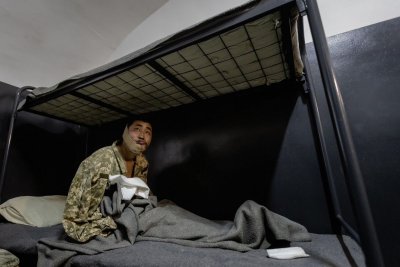
April 28 (UPI) — North Korea gave the first official confirmation Monday that its troops were fighting in the ranks of the Russian Army in its war against Ukraine.
The Central Military Commission said in a statement issued via the state-run KCNA news agency that North Korean leader Kim Jong Un had ordered the troops be deployed in line with the country’s commitment to come to Russia’s aid under a mutual defense pact signed by Pyongyang and Moscow in June.
The statement claimed the North Korean contingent had aided the recapture of Kursk province from Ukrainian forces at the weekend, eight months after parts of the region were occupied following a counteroffensive by Kyiv.
It said the campaign had been “victoriously concluded” and that North Korea was “honoured to have an alliance with such a powerful state as the Russian Federation.”
“Comrade Kim Jong Un defined it as a sacred mission for further consolidating as firm as a rock the traditional friendship and solidarity between the DPRK and Russia,” it added.
“They who fought for justice are all heroes and representatives of the honor of the motherland,” said Kim, promising that a monument to their sacrifice would be erected in Pyongyang and that flowers would be placed on the tombs of those who fell in battle.
Kim also pledged “preferential treatment” and care for the families of troops who participated in the war.
Russian President Vladimir Putin on Monday heaped praise on North Korea, Kim and units of the Korean People’s Army for their help in “liberating” the Kursk Region, the state-run TASS news agency reported.
“Our North Korean friends’ move was guided by a sense of solidarity, justice and genuine camaraderie. We highly appreciate this and are sincerely grateful, personally to the Chairman of the State Affairs Committee, Comrade Kim Jong-un, as well as to the entire leadership and the people of North Korea,” Putin said.
“We commend the North Korean soldiers’ heroism, their excellent training and dedication displayed while fighting, shoulder to shoulder with Russian soldiers, defending our Motherland as their own. They fulfilled their duty with honor and valor, covering themselves with unfading glory.”
Ukraine dismissed Russian claims that its forces had been routed in Kursk as propaganda, insisting the fighting was continuing in parts of the province.
No mention was made of the numbers of North Korean troops deployed or casualties sustained, but the acknowledgement from Pyongyang was the first time the secretive Marxist-Leninist state has admitted providing reinforcements for Russia’s war effort, despite United States, South Korea and Ukraine saying it had sent up to 12,000 troops to fight in Kursk in the fall.
South Korea, which claims about 4,000 of the North Koreans have been killed or injured, said the statement from Pyongyang was an effective admission of “its criminal behavior.”
“Our military strongly urges North Korea to immediately cease its deceitful and inhumane actions that threaten international peace and force the sacrifice of its residents through illegal military dispatches,” the South Korean National Defense Ministry said in a statement Monday.
The troop deployment provides much-needed 21st-century combat experience for North Korean forces, which have not fought a war in more than five decades, with the lack of modern battlefield smarts a major chink in its armor, according to experts.
Earlier this month, Ukrainian President Volodymyr Zelensky claimed two Chinese citizens fighting in the Russian army had been taken prisoner.
Zelensky said the two Chinese fighters were detained in Donetsk Oblast in eastern Ukraine, which borders Russia. They were identified from documents, bank cards and personal information discovered on them when they were captured.
He said he believed the Kremlin’s ranks likely contained many more soldiers from the East Asian ally of Russia.
Hundreds of demonstrators gathered in Paris to protest against Islamophobia after a Muslim man was stabbed to death at a mosque in southern France. Video has emerged showing the alleged attacker before the crime. French politicians attended the rally, condemning the growing climate of Islamophobia in the country.
Published On 28 Apr 202528 Apr 2025
Amid President Trump’s fusillades against the media, a recent strike stood out:
Trump-appointed Federal Communications Commission Chairman Brendan Carr took aim this month at cable giant Comcast, which owns NBC and liberal-skewing MSNBC, in a message on X over the tilt of the news coverage on its TV channels.
Carr accused Comcast of twisting its reporting on Kilmar Abrego Garcia, an immigrant who was mistakenly deported to El Salvador. Trump has alleged Abrego Garcia is an MS-13 gang member (which he denies) and the president’s lieutenants have defied a judge’s order to return him to the U.S., putting the administration increasingly at odds with federal courts.
“Comcast outlets spent days misleading the American public — implying that Abrego Garcia was merely a law abiding U.S. citizen, just a regular ‘Maryland man,’” Carr wrote in a recent post. “News distortion doesn’t cut it.”
Within days, a conservative legal group echoed Carr’s words in a petition asking the FCC, which governs broadcast licenses, to investigate whether coverage of Abrego Garcia on NBC, ABC and CBS distorted facts.
The case is yet another example of Carr’s dramatic transformation from a low-key communications policy wonk into one of Trump’s staunchest cultural warriors.
Since becoming FCC chairman in late January, Carr has repeatedly poked the corporate owners of ABC, CBS and NBC — networks the president dislikes. Last fall, Trump sued CBS over edits to a pre-election “60 Minutes” interview with then-Vice President Kamala Harris. Trump has demanded $20 billion, alleging the interview was doctored to make Harris look better. CBS should lose its licenses, Trump has said.
Carr opened an FCC inquiry into whether the “60 Minutes” edits rose to the level of news distortion.
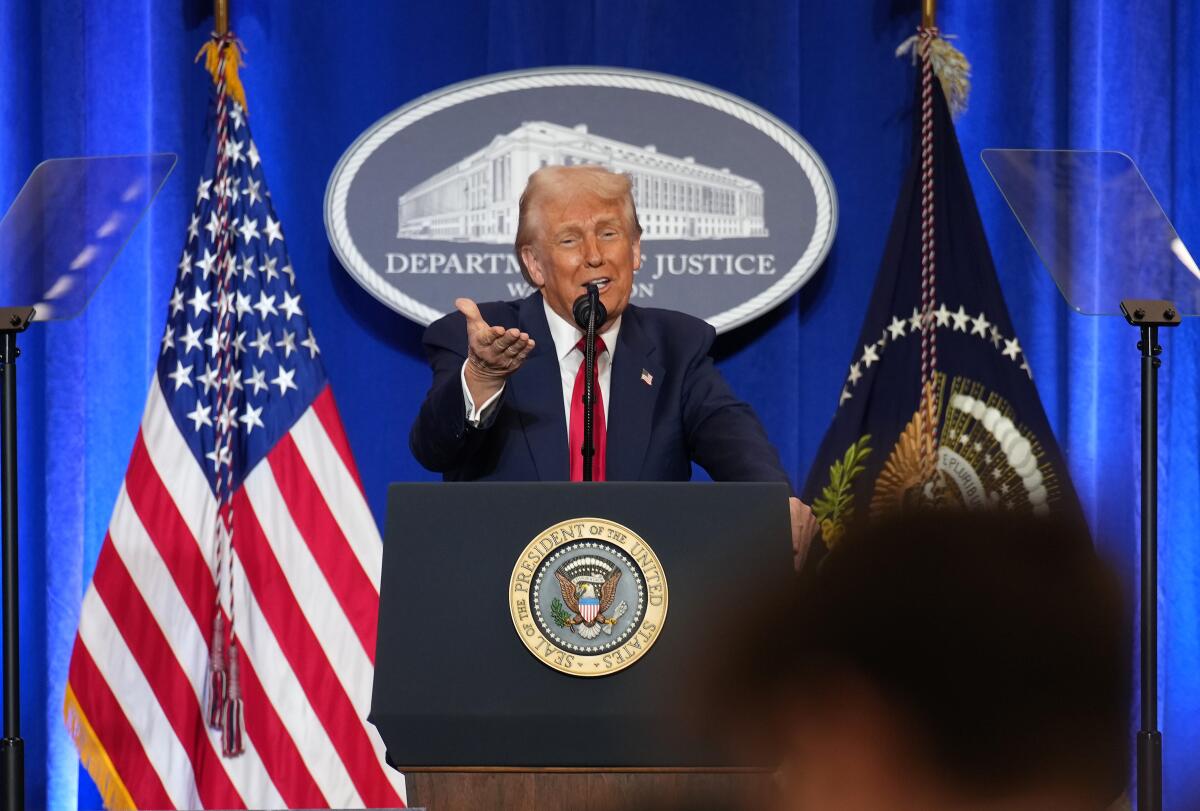
President Trump in March.
(Andrew Harnik / Getty Images)
He ordered CBS to turn over raw footage of the Harris interview. CBS complied and outtakes showed Harris was quoted accurately, bolstering CBS’ account that it had not manipulated the interview. But the issue has roiled CBS owner Paramount Global and stalled the company’s proposed sale to David Ellison’s Skydance Media.
Last week, the chief of “60 Minutes” quit, citing corporate pressure that crushed his editorial independence.
Paramount, in a statement, said it considers the FCC review and Trump’s lawsuit as separate issues. The company declined further comment. The FCC and a Carr representative did not respond to interview requests.
Conservatives have said they believe major networks suffer from extreme liberal bias and an intolerance toward opposing points of view. That has harmed America and resulted in a plummeting public trust in national news outlets, they assert, adding that FCC intervention may be justified.
“The FCC over the last decade or so has walked away from enforcing [its] public interest obligations on broadcasters,” Carr said in a March interview with the D.C.-centric Punchbowl News. He wants to restore the agency’s teeth.
“If a broadcaster has a problem with that … the FCC address is 45 L Street, Northeast,” Carr said. “They can give us their licenses back.”
Carr’s critics, however, said that dangling the FCC’s enforcement authority over broadcasters in the name of protecting free speech does just the opposite.
“Here’s the question for Brendan Carr: Are you now the person who’s deciding what news should cover and what it shouldn’t cover?” asked analyst and former FCC staff member Blair Levin. “Because I don’t see that in the law.”
Congress established the FCC in 1934 as an independent regulator of phone service and spectrum — airwaves used by broadcasters. The panel was meant to be bipartisan with three commissioners from the sitting president’s party and two from the opposition. (The fifth commissioner, a Trump nominee, is awaiting Senate confirmation.)
Commissioners have worked together this year on key issues, including curbing robocalls and promoting spectrum-sharing among satellite systems. Other issues are far more partisan.
The 46-year-old chairman has a strong conservative pedigree. He grew up in the Washington, D.C., area, where his late father worked as an attorney who specialized in white-collar crime and once represented President Nixon.
Carr graduated from Georgetown University, then earned his law degree at Catholic University, where he met his wife, Machalagh, who went on to serve as chief of staff for Kevin McCarthy when the California Republican was House speaker.
They are among D.C.‘s power couples. Earlier this year, she joined billionaire Peter Thiel’s data analytics firm, Palantir Technologies, as its head of global policy.
Brendan Carr boosted his profile two years ago by writing the FCC chapter in Project 2025, the right-wing blueprint for a second Trump term.
He devoted much of his 15 pages to his long-standing priorities, including “reining in Big Tech,” “promoting national security,” “unleashing economic prosperity” and “ensuring FCC accountability and good governance.”
There was no mention of news bias.
Instead, Carr stressed making electromagnetic spectrum available for commercial use through public auctions, a program that had largely stalled under President Biden. Carr wants to make it easier for low-Earth-orbiting satellites to deliver high-speed internet, a priority he shares with billionaire SpaceX founder Elon Musk to support the Starlink satellite fleet.
As FCC chairman, Carr has left no doubt he’s on Team Trump. He was part of a VIP delegation with Trump and Musk to watch a SpaceX rocket launch in Texas in November. He’s spent time at Mar-a-Lago, flown on Air Force One and, in a recent photo, he sported a walnut-size gold-colored lapel pin in the shape of Trump’s head.
Carr has advocated for Congress to slash funding for public radio and TV stations.
He made abolishing diversity, equity and inclusion programs his first task as chairman, sending strongly worded letters to Walt Disney Co. Chief Executive Bob Iger, Comcast Chairman Brian L. Roberts and Verizon CEO Hans Vestberg over their companies’ internal programs.
He opened investigations into the DEI initiatives of those companies. The companies declined to comment.
Carr has threatened to block mergers unless firms dismantle DEI initiatives. Verizon is seeking approval for its $9.6-billion purchase of Frontier Communications.
“He’s making these very powerful companies jump,” said Gigi Sohn, a former FCC lawyer and senior fellow at the Benton Institute for Broadband & Society. “They are hard-pressed to push back on the FCC for fear that the agency will punish them later on.”
As justification, Carr consistently points to the low tide of public trust. In a December letter to Disney’s Iger, Carr accused ABC of being part of the problem.
“More Americans trust gas station sushi than the legacy national media,” Carr wrote on X.
Carr hasn’t always been so politically strident.
Shortly after becoming a commissioner during Trump’s first term, Carr touted his time at the FCC under Republican and Democrat leadership. “These experiences have instilled in me an appreciation for the importance of bipartisan consensus and working toward common ground,” he told a House subcommittee in October 2017.
In early 2021, Carr denounced Democrats who called for Fox News to be dropped from cable bundles after the Jan. 6, 2021, violent insurrection at the Capitol.
“A newsroom’s decision about what stories to cover and how to frame them should be beyond the reach of any government official, not targeted by them,” Carr said in a statement at the time.
Carr has acknowledged “a pretty hard-charging” start to his FCC term. At a Free State Foundation conference this spring, Carr explained that was because chairmanships are typically fleeting. He said he wants to accomplish a great deal so he can leave with no regrets.
Some FCC watchers speculate that Carr will accelerate remaking the agency after the third Republican, Olivia Trusty, wins Senate confirmation. Another former chairman, Tom Wheeler, said he sees an artful strategy by Carr to create turbulence with little recourse.
“Brendan Carr is incredibly talented, very bright [and] politically savvy,” Wheeler said. “He’s using those skills deftly to avoid any judicial review.”
The FCC is supposed to operate independently and have great authority. In a recent editorial, Wheeler wrote Carr’s actions “appear designed to evade judicial review” because they were taken under his authority as chairman, but without a full commission vote.
“He is accomplishing [his objectives] by investigations, pronouncements and threats,” Wheeler said.
A group of Senate Democrats has introduced legislation to reaffirm the FCC’s role as an independent agency and forbid it from using its authority “to suppress certain viewpoints or intimidate broadcast licensees into aligning with any political agenda.”
But recent court rulings suggest that Carr’s power to “punish” Trump’s rivals could be limited. This month, an appeals court struck down a $57-million fine the previous FCC chair had imposed on AT&T, finding the FCC had overstepped.
Complaints about NBC’s coverage of the El Salvador immigrant, Abrego Garcia, don’t fit the legal definition of news distortion, said FCC Commissioner Anna Gomez, a Democrat.
“It’s all part of the pattern of bullying and harassing in order to control and censor,” Gomez said. “What I’m hopeful is that the FCC will return to its core mission, because right now the actions that you’re seeing not only are contrary to the 1st Amendment but they also violate our statutes.”
Who: Arsenal vs Paris Saint-Germain (PSG)
What: UEFA Champions League semifinal, first leg
Where: Emirates Stadium, London
When: Tuesday at 8pm (19:00 GMT)
Follow Al Jazeera Sport’s live text and photo commentary stream.
Thirteen-time English top-flight league victors Arsenal continue their quest to win a maiden UEFA Champions League title when they clash with PSG in the first leg of their semifinal at Emirates.
The Gunners booked their place in the final four of the tournament by thoroughly outplaying defending champions Real Madrid to win their quarterfinal series 5-1 on aggregate.
PSG’s road to the Champions League semifinal stage has been equally impressive. Les Parisiens caused one of the biggest upsets of the tournament, defeating Liverpool on penalties in the round of 16 after the teams finished their two-leg series tied at 1-1.
PSG have also been utterly dominant in their domestic Ligue 1 competition this season, recording a stunning 30-game unbeaten streak that only ended on Friday in a 3-1 home defeat against Nice.
Here is all to know before the semifinal opener between two of the most dynamic football clubs in Europe:
The teams last played on October 1 in a group phase fixture.
First-half goals by Kai Havertz and Bukayo Saka helped Arsenal ease to a 2-0 home win over PSG at Emirates Stadium.
But PSG have improved dramatically since then due in large part to manager Luis Enrique’s decision to drop star striker Ousmane Dembele against Arsenal for disciplinary reasons – an action that inspired the France forward’s superb run of form.
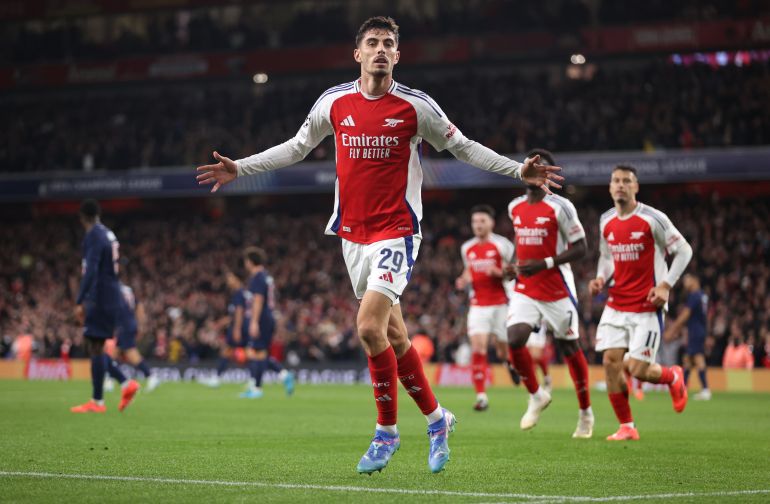
PSG upset Premier League leaders Liverpool in the round of 16, dramatically winning the second leg in a penalty shootout.
They then knocked out another top English club, Aston Villa, at the quarterfinal stage, winning 5-4 on aggregate and advancing to their third Champions League semifinals in five years.
Arsenal, in addition to causing a major boil-over by defeating Real Madrid in the quarters, destroyed Dutch-side PSV Eindhoven 9-3 on aggregate in the round of 16.
Manager Mikel Arteta faces a couple of key selection headaches with the number one issue being who will replace key midfielder Thomas Partey, who will sit out this match against PSG with a one-game suspension. Mikel Merino is tipped to replace the Ghanaian international with Leandro Trossard slotting into the forward line in Merino’s place.
On the injury front, Jorginho, who would have been the most suitable replacement for Partey, is expected to miss Tuesday’s match as he recovers from a rib injury. Defenders Ben White and Riccardo Calafiori are doubtful as both recover from knee injuries.
Kai Havertz, Gabriel Jesus, Gabriel Magalhaes, and Takehiro Tomiyasu are all sidelined for the rest of the season.
In a rare occurrence for this late in the season, PSG manager Luis Enrique’s squad is injury-free for Tuesday’s match against Arsenal in London.
Despite the team losing its 30-game unbeaten streak in that uncharacteristic 3-1 drubbing, Enrique is expected to retain the same starting XI for their Champions League fixture with the possible exception being Desire Doue’s demotion to make way for Bradley Barcola in the midfield.
Arteta will have to beat one of the most influential figures in his football life to advance to the Champions League final.
Standing in his way is a close friend who played a major role in his Spanish compatriot’s impressive transition from the pitch to the dugout.
Enrique was a senior star at Barcelona when Arteta started his playing career at the Camp Nou, a period that had a major impact on his managerial philosophy with Arsenal.
“He was extremely supportive with the young players. He was one of the main characters by far. I have really good memories of him,” Arteta said.
“What I love about him is wherever he’s been, as a player or a manager, his fingerprints are all over the place.
“You can sense it’s his team with the way his players behave, the way they want to attack and dominate games.”
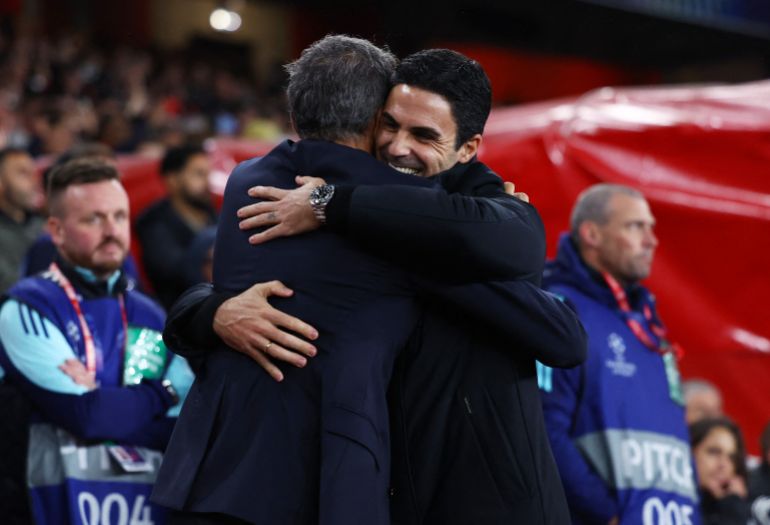
Arsenal possible starting XI: Raya; Timber, Saliba, Kiwior, Lewis-Skelly; Rice, Merino, Odegaard; Saka, Trossard, Martinelli
PSG possible starting XI: Donnarumma; Hakimi, Marquinhos, Pacho, Mendes; Ruiz, Vitinha, Neves; Barcola, Dembele, Kvaratskhelia
The gifted French forward overcame a slow start to the season to reel off one of the greatest offensive performances in Europe this season.
In 44 domestic league fixtures, the 27-year-old Dembele scored 32 goals and recorded 12 assists to fuel PSG’s incredible 30-match unbeaten run. His contribution in front of goal was pivotal to Les Parisiens winning the Ligue 1 title with an astounding six games remaining in the season.
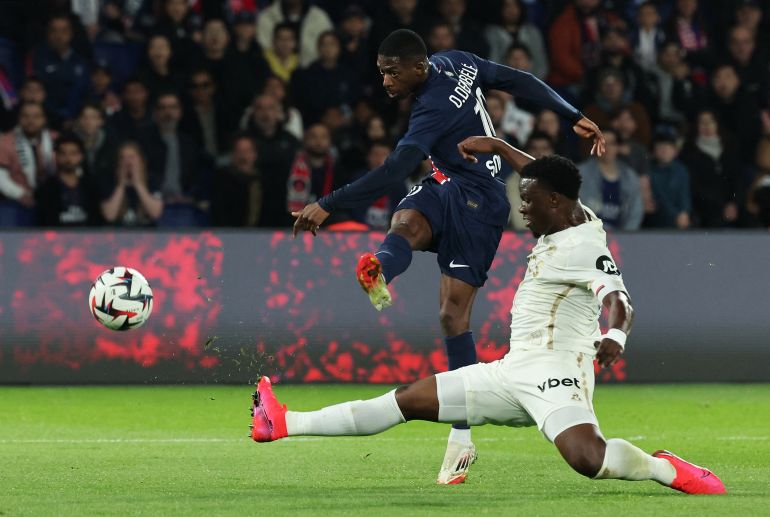
TOTTENHAM’S Europa League semi-final opponents Bodo/Glimt face an absentee crisis ahead of Thursday’s first-leg showdown.
The Norwegian champions are already without three players due to suspension, including influential skipper Patrick Berg.
But now they are sweating on injuries to key centre-back Odin Bjortuft and winger Ole Blomberg.
Ever-present Bjortuft, 26, was forced off early in the second half of Bodo’s 3-0 league win over KFUM on Sunday with a groin complaint.
Bodo boss Kjetil Knutsen said after the game: “I do not know anything. I never enjoy a player laying down, but the medical staff are looking into it.”
Bjortuft is now a doubt for this week’s trip to North London, along with wideman Blomberg who missed the KFUM game completely due to an injury picked up earlier this month.
Skipper Berg, 27, is banned, due to too many yellow cards, along with midfield partner Hakon Evjen and striker Andreas Helmersen.
The latter netted a crucial goal in the quarter-final triumph over Italian giants Lazio, which added to their impressive list of scalps this season.
Knutsen’s side have already beaten Olympiacos, FC Twente and Besiktas this season.
While they also gave potential final opponents Manchester United a scare by going 2-1 up at Old Trafford in November, only to lose 3-2 thanks to a Rasmus Hojlund double.
CASINO SPECIAL – BEST CASINO BONUSES FROM £10 DEPOSITS
Bodo’s domestic campaign has only just kicked off, but they are unbeaten in four league games, winning three of them.
Spurs’ season – and possibly the future of boss Ange Postecoglou – hinges on them going all the way in Europe.
That is after an horrendous league term where they have lost NINETEEN games, with their latest disasterclass coming at Anfield on Sunday where a 5-1 thrashing handed Liverpool the title.
Postecoglou has been without multiple key players due to injury this season but goes into the Bodo game only worrying about the fitness of captain Son Heung-min.
The South Korean, 32, has missed the last four games with a foot injury.
Supporters of President Trump and counter-protesters converged in West Hollywood and Beverly Hills on Sunday in a small but raucous confrontation that included a performance from a pro-Trump punk rock icon and remarks from a disgraced ex-congressman.
At a rally aimed at encouraging voters to leave the Democratic Party, former Florida Rep. Matt Gaetz portrayed the Republican Party as “patriotic and joyful” while denigrating the opposition as “angry and lonely.”
“They are the movement that allowed this great state to burn,” Gaetz said. “They are the movement that turned what was paradise over to the homeless and illegal aliens.”
Gaetz, currently hosting a political news show for One America News Network from San Diego, had stepped down from his congressional seat after Trump nominated him to be the nation’s attorney general. The nomination sparked controversy because Gaetz was previously under investigation by the Department of Justice for allegations of child sex trafficking. After a long-running probe, prosecutors did not file charges.
Matt Gaetz spoke Sunday at a Beverly Hills rally that aimed to persuade Democrats to drop their party registration and join Republicans.
(Carlin Stiehl / Los Angeles Times)
Gaetz ultimately withdrew himself from consideration for the attorney general post. In December, the House Ethics Committee reported that it had found evidence that he abused drugs and paid for sex, including with a minor, while serving in Congress.
Gaetz’s scandal-ridden history went unmentioned at the rally Sunday, where he beckoned those disaffected with the left to join Republicans.
“If you come to our side,” he told a few hundred attendees, “we will welcome you with a patriotic embrace.”
Though tense at times, the rally, dubbed the “American Restoration Tour,” was largely peaceful, with the exception of a small fight and an arrest. Private security guards tackled a man who appeared to be wearing a kilt and yelling. He appeared to be handcuffed by police officers as Trump supporters chanted “U.S.A.”
One person was arrested at the rally on suspicion of assault with a deadly weapon, said Beverly Hills police Sgt. Richard Billingsley, although it was unclear if it was the same individual seen detained by officers. No additional details about the incident were available Sunday evening.
Members of the #WalkAway movement rallied Sunday in West Hollywood, urging others to leave the Democratic Party.
(Carlin Stiehl / Los Angeles Times)
The rally was held in Beverly Gardens Park, a lush green space that runs parallel to Santa Monica Boulevard and has been the site of frequent demonstrations in support of Trump. Although much of the affluent Westside skews liberal, Beverly Hills is home to neighborhoods that repeatedly voted for Trump.
Shiva Bagheri, the organizer of some pro-Trump gatherings there in 2020, told the crowd that she fled Iran because of the impact of “radical Islam” on the nation. Bagheri said she voted for President Obama, but the “bubble was popped” because he gave “boatloads of cash to Iran.”
A through-line of the roughly two-hour rally were speakers like Bagheri: former liberals who felt disenfranchised by the Democratic Party and became full-throated Trump supporters.
Actress Natalie Beisner, who voted for Hillary Clinton and Obama, said the pandemic shutdowns made her rethink her political views. Beisner said that due to the shutdowns, she lost two jobs and her grandmother died alone, while at the same time, protesters prompted by the death of George Floyd could gather en mass. When she raised such concerns, Beisner said she was called racist and selfish.
“These people refused to acknowledge that I might have an honest reason for disagreeing with them. There was no conversation,” she said. “So I walked away from the Democrat Party because for the first time in my life, I connected my suffering directly to Democrat policies.”
Before the rally, which was organized by the creator of the #WalkAway social media campaign encouraging voters to leave the Democratic Party, Trump supporters gathered in the heart of the LGBTQ+ community in West Hollywood to march into Beverly Hills.
As diners along Santa Monica Boulevard brunched on patios and took in a drag queen performance, several dozen pro-Trump marchers chanted, “Walk away from hate.”
Anti-Trump protesters and members of the #WalkAway movement confronted one another Sunday in West Hollywood.
(Carlin Stiehl / Los Angeles Times)
A slightly larger number of counter-protesters had gathered nearby, yelling, “No KKK! No fascist USA! No Trump!”
A West Hollywood resident who went by the name Anniejump came with a loud speaker and pink bandannas. She called the group “bigots” who came to the community of West Hollywood “to attack queers.”
“Anybody who doesn’t like fascists wants them out of town,” Anniejump said.
But the LGBTQ+ community is not monolithic in its political views.
Hunter Gibson, a 29-year-old gay man, told The Times that he felt that in places like West Hollywood, “if you don’t think a certain way, you’re ostracized.” Conservative groups, he said, were more open to dialogue.
At the rally, several speakers focused on the transgender community. After the event, Brandon Straka, a gay man and the founder of the #WalkAway campaign behind Sunday’s event, expressed concern about transitioning by underage people.
Brandon Straka, the founder of #WalkAway, marches in West Hollywood on Sunday as part of a campaign to persuade Democrats to join the Republican Party.
(Carlin Stiehl / Los Angeles Times)
Straka was pardoned by Trump in January after being convicted of misdemeanor disorderly conduct for taking part in the Jan. 6 insurrection at the U.S. Capitol.
“I think you can be pro-transgender and also recognize that there’s a culture that’s too permissive, that’s turning people into permanent victims, especially people who are not actually transgender,” he said in an interview.
Cherie Currie, the former lead singer of the Runaways, sang “Cherry Bomb” at the rally.
The 1976 song was a subversive celebration of female sexuality and rejection of the patriarchy by an all-female band. Currie has since become a supporter of the “Gays Against Groomers” movement.
Hi, and welcome to another edition of Prep Rally. My name is Eric Sondheimer. The NFL draft was held last week, and dreams came true.
Former Servite football coach Troy Thomas was invited to Green Bay on Thursday to see if his two former players, Mason Graham and Tetairoa McMillan, would be first-round NFL draft picks. It happened fast and early.
Graham, the defensive lineman from Michigan, went to the Cleveland Browns as the No. 5 selection. McMillan, the receiver from Arizona, went No. 8 to the Carolina Panthers, whose quarterback happens to be Heisman Trophy winner and former Mater Dei quarterback Bryce Young.
Then came former Oaks Christian and UCLA linebacker Carson Schwesinger being taken by the Browns with the opening pick of the second round. Here’s a report on his storybook rise from college walk-on to NFL draft choice.
Few were happier than Loara grad Ahmed Hassanein, a native of Egypt who played defensive end for Boise State and was a sixth-round pick of the Detroit Lions.
As if following Southern California grads wasn’t exciting enough last weekend, perhaps the No. 1 quarterback in Southern California from the Class of 2026, Brady Smigiel of Newbury Park, announced he has committed to Michigan. Here’s the report.
Newsletter
Get our high school sports newsletter
Prep Rally is devoted to the SoCal high school sports experience, bringing you scores, stories and a behind-the-scenes look at what makes prep sports so popular.
You may occasionally receive promotional content from the Los Angeles Times.
Corona players celebrate winning Boras Classic in San Diego.
(Nick Koza)
Corona is back hitting home runs and destroying the competition. The Panthers scored 23 runs against Corona Centennial in the first game of a three-game sweep and ended the week with a 13-3 win over St. Mary’s in the championship game of the Boras Classic in San Diego.
Back at the No. 1 position in Southern California, Corona closes out league play with a three-game series against Eastvale Roosevelt. Then the Southern Section Division 1 playoffs will soon begin and everyone will be trying to beat the Panthers.
The big surprise of the week was Huntington Beach losing twice to Newport Harbor in Sunset League play. The Oilers still hold a two-game lead. Here’s a report.
St. John Bosco completed an incredible turnaround, clinching its first Trinity League championship since 2017. Here’s a report.
Hunter Manning of West Ranch struck out 12 in 3-1 win over Hart.
(Craig Weston)
Hunter Manning struck out 12 in West Ranch’s 3-1 win over Hart. Here’s a report.
Birmingham and El Camino Real continue on a collision course to decision the West Valley League title. El Camino Real’s only loss in league play was to Birmingham. Sylmar and Poly meet this week to decide the Valley Mission League title.
Venice is 21-1 and 14-0 in the Western League. The Gondoliers picked up a 12-2 win over Loyola on Saturday.
Harvard-Westlake and Crespi play a three-game series to decide the Mission League title. Jackson Eisenhauer of Crespi enters this week having allowed no earned runs in 47 innings.
Summit is on an 18-game winning streak.
Here’s this week’s top 25 rankings by The Times.
Here’s the Southern Section power rankings.
Norco, Rosary and Orange Lutheran continue to be the top three softball teams in the Southland. Here are the rankings by CalHiSports.com.
Norco is 23-2 and 7-0 in league. Norco plays second-place King on Tuesday.
Kai Minor is having an MVP season for Orange Lutheran. Here’s a report.
Lots of Southern California natives have been named to the USA national softball team competing in China. Here’s the report.
The Southern Section released its playoff pairings. Loyola is seeded No. 1 in boys and Mira Costa gets the top seed in girls.
Here’s the link to pairings.
The City Section finals are Wednesday at El Camino Real, matching El Camino Real and Palisades in both the boys and girls finals. University’s boys team forfeited its semifinal match because it did not have enough players after others opted to prepare and attend school prom.
Girls lacrosse: Palisades 14, Birmingham 9. Elexus Ray scores eight goals and goalie Sarah Finestone makes 12 saves for the Dolphins (10-5), who advance to the @CIFLACS championship game Wednesday at El Camino Real. Annais Galindo scores five goals for the Patriots (2-16).
— Steve Galluzzo (@palipostsports) April 27, 2025
The Southern Section playoff pairings were released for boys, and Mira Costa is seeded No. 1. Action begins Wednesday in pool play.
Here are the pairings.
The Southern Section girls beach volleyball playoffs continue. Quarterfinal action takes place Tuesday. Here’s the updated pairings.
The City Section will hold its competition Friday at Santa Monica State Beach. Venice is seeded No. 1 in the 16-team tournament. Here’s the pairings.
Shortstop Colin Yeaman of UC Irvine had no scholarship offers in 2022 after graduating from Saugus High. He went to COC and has become a standout this season at Irvine.
(Robert Huskey courtesy UC Irvine)
It was the spring of 2022 when Colin Yeaman finished as the leading hitter with a .385 batting average on a 13-16 Saugus High baseball team. He had zero home runs, which matched how many scholarship offers he had.
“I figured not getting any offers, junior college was going to be the best place for me to grow and develop to get to the Division I level,” he said.
During two injury-plagued seasons at College of the Canyons, he grew to 6 feet 2 and 200 pounds. He started showing moments of power and ability playing shortstop.
This season at UC Irvine he has become a pro prospect with 12 home runs. Here’s the story of how he did it.
Loyola volleyball coach Michael Boehle is moving forward despite being diagnosed as having prostrate cancer.
(Eric Sondheimer / Los Angeles Times)
On the day before volleyball practice began in January, Hall of Fame coach Michael Boehle spoke to his players at Loyola High to let them know about expectations for the coming season.
“One of the things we talk about is cancer within a team and how there are times when cancer can really affect a lot of things and it’s not curable and it spreads,” he said. “We use that analogy talking about bad teammates.”
Players had no idea what was about to come out of their coach’s mouth.
“Unfortunately, today, I’m here to tell you your coach has cancer.”
So began his battle with prostrate cancer in the middle of volleyball season. Here’s his story.
The City Section announced that the Narbonne High football team has been banned from the playoffs for the 2025, 2026 and 2027 seasons because of rule violations, and all the school’s sports programs have been placed on probation through the 2027-28 school year. Narbonne also has to vacate its 2024 football title.
Here’s the report.
Jonathan Antolin is the new basketball coach at Tustin. He was an assistant at Foothill. . . .
Ben Finnegan from Santa Margarita has committed to Point Loma Nazarene for baseball. . . .
Kaliya Ndiaye of Santa Margarita has committed to Syracuse for women’s volleyball. . . .
Former Ontario Christian coach Matt Tumambing is the new girls basketball coach at Corona Centennial. . . .
Jordan Jamestown is the new basketball coach at Newbury Park. He had been an assistant at Harvard-Westlake. . . .
Pitcher Joseph Moreno of South Hills has committed to St. Mary’s. . . .
Alijah Arenas of Chatsworth, the City Section co-basketball player of the year headed to USC, was involved in a serious car accident last week and has been recovering. Here’s the report. . . .
Top girls golfer Jude Lee from Orange Lutheran has qualified to the U.S. Women’s Open. . . .
Irvine University sophomore Rishvanth Krishna won the singles title at the Ojai tennis tournament. Here’s the report. . . .
Another prominent player has been added to the high school football transfer tracker.
Isaiah Magdaleno during his Crespi days.
(Crespi)
Former Crespi pitcher Isaiah Magdaleno is thriving as a relief pitcher at Hawaii.
He’s 4-1 with a 2.89 ERA and has five saves in 43 2/3 innings.
He helped Crespi win the Southern Section Division 2 championship in 2023 as the Celts’ ace pitcher.
Here’s a story from 2023 on Crespi’s incredible comeback in the Division 2 final.
From the San Diego Union-Tribune, a story about six high school games being played at Petco Park and the impact of the experience on players.
From the Washington Post, a story on the coming rule changes and likely changes for college athletics.
I need a step ladder to interview pitchers in the Trinity League. 6-8 Gary Morse and 6-7 Blake Killinger at Orange Lutheran. 6-8 Owen Shannon at Mater Dei. JSerra has 6-7 pitcher. We need a one on one basketball competition. Or dunk contest. pic.twitter.com/GSUkrhjc5p
— eric sondheimer (@latsondheimer) April 22, 2025
#RIP to Jack Nelson AKA Mater Dei Jack.
Great guy, great American who served in Korea; was a mechanic for the US Armed forces.
Loved #HSBB
Was 90 years old.
Had two #HSBB pet peeves: Foul when up 3, and by no circumstances shoot too early when leading by 1 or tied. pic.twitter.com/46Sbed6brg
— Ronnie Flores (@RonMFlores) April 24, 2025
Until next time…
Have a question, comment or something you’d like to see in a future Prep Rally newsletter? Email me at [email protected], and follow me on Twitter at @latsondheimer.
Did you get this newsletter forwarded to you? To sign up and get it in your inbox, click here.
Islamabad, Pakistan – Tensions between India and Pakistan have soared since the April 22 attack on tourists in the scenic resort town of Pahalgam in Indian-administered Kashmir, in which at least 26 people were killed.
Both countries have announced a series of tit-for-tat measures, raising fears of a wider confrontation.
After a cabinet meeting led by Prime Minister Narendra Modi, India on Wednesday announced the suspension of the six-decade-old Indus Waters Treaty (IWT), a critical agreement that governs the use of the Indus River system, vital to both nations. It also announced the closure of its border with Pakistan, trade suspension, revocation of visas, and a reduction in Pakistani diplomats in India.
In response, Pakistan’s National Security Committee (NSC), its top civil-military decision-making body, announced similar measures, including border and airspace closures, suspension of trade, and, significantly, a threat to suspend its participation in all bilateral agreements with India, including the Simla Agreement.
Signed in 1972, the Simla Agreement forms the bedrock of India-Pakistan relations, governing the Line of Control (LoC) and outlining commitments to resolve disputes peacefully.
Pakistan’s threat to suspend the agreement marks a potentially serious escalation. But what exactly is the Simla Agreement, and what are the implications if Pakistan pulls out of it?
Seven months after the 1971 war, which India won and which led to the creation of Bangladesh, Pakistani President Zulfikar Ali Bhutto and Indian Prime Minister Indira Gandhi met in Shimla (sometimes also spelt as Simla), the hilly capital of the Indian state of Himachal Pradesh, to normalise relations.
Key points of the agreement [PDF], signed on July 2, 1972, included the peaceful settlement of disputes and resolving issues, including Kashmir, bilaterally.
It also urged respect for territorial sovereignty, integrity, political independence and noninterference in internal affairs.
One of the most important outcomes was the renaming of the Ceasefire Line, the working border between the two countries, to the Line of Control (LoC), with both sides agreeing not to change it unilaterally.
Following the 1971 war, the agreement also led to the release of more than 90,000 Pakistani prisoners of war India was holding.
“Pending the final settlement of any of the problems between the two countries, neither side shall unilaterally alter the situation, and both shall prevent the organisation, assistance or encouragement of any acts detrimental to the maintenance of peaceful and harmonious relations,” the agreement stated.
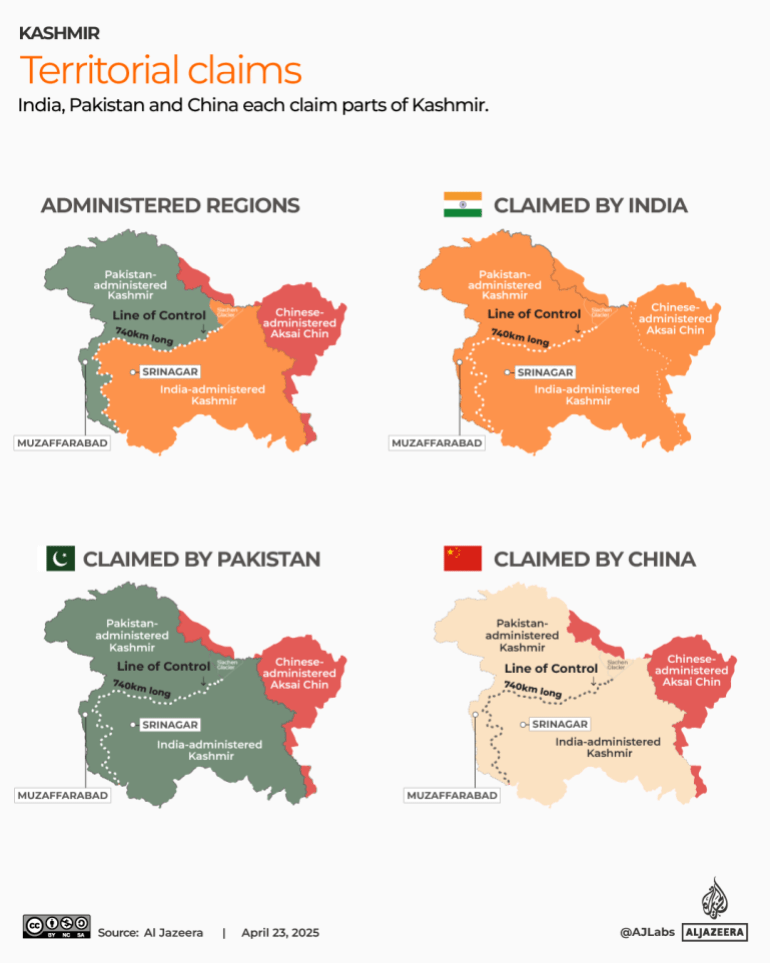
Ahmer Bilal Soofi, a leading international law expert and former legal adviser to the Pakistan government, described the Simla Agreement as an interim but crucial framework between the two countries.
“Suspending the agreement would require a meticulous internal assessment” by Pakistan to ensure that it serves the country’s interests in retaliating against India, Soofi told Al Jazeera. “Any decision must involve extreme due diligence.”
Another international law expert, Muhammad Mushtaq Ahmad of Shifa Tameer-e-Millat University, explained that India has long interpreted the Simla Agreement as superseding United Nations Security Council (UNSC) resolutions.
“India’s position is that the agreement made the Kashmir issue a purely bilateral matter, removing any need for international mediation,” Ahmad said.
The Himalayan territory has been a flashpoint between the two countries since they gained independence from British rule in 1947, with each controlling parts of Kashmir but claiming it in full. Since independence, the nuclear-armed neighbours have fought four wars, three of them over Kashmir.
Pakistan, on the other hand, maintains that the Simla Agreement reaffirmed UNSC resolutions advocating a diplomatic and political solution.
After the Modi government revoked Indian-administered Kashmir’s semi-autonomous status in 2019, Pakistan accused New Delhi of violating the Simla Agreement.
Islamabad could cite that to justify the suspension of its participation in the agreement, Ahmad said. Under the Vienna Convention on the Law of Treaties – a pact Pakistan is signatory to, but India is not – a material breach allows a country to denounce a treaty, he added.
But Indian defence analyst Ajai Shukla says if either or both countries walk out of the Simla Agreement, it would effectively represent an “open season” on the LoC.
“It could lead to both sides changing the ground position of the LoC, and they will be incentivised to use arms as there won’t be any treaty that will impose peace, which is currently in place,” the New Delhi-based analyst told Al Jazeera.
Despite the Simla Agreement, India and Pakistan have engaged in conflicts, including their four-decade-long joust for control of the Siachen Glacier — the world’s highest battleground — and the 1999 Kargil War.
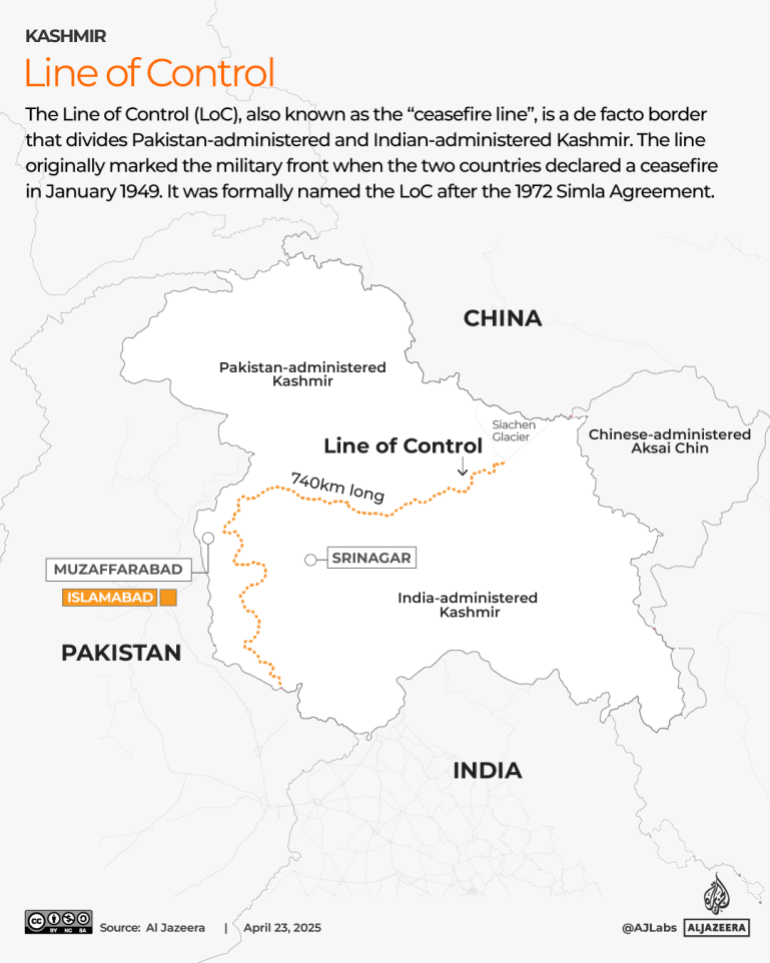
Ahmad, the academic, said the LoC was never able to establish lasting peace.
Pakistani constitutional expert Rida Hosain argued that India had historically “misused” the Simla Agreement to its advantage.
“At the heart of Simla [Agreement] is peaceful coexistence. But India’s recent war-mongering rhetoric and blame for attacks without evidence suggest otherwise,” Hosain said, referring to India’s allegation that Pakistan was responsible for the Pahalgam attack. Pakistan has rejected the accusation and demanded that India present evidence to support its claim. Islamabad has also called for a “neutral investigation” in to the Kashmir attack.
Shukla, a former Indian Army officer, however, said a pullout by Pakistan from the Simla Agreement would not automatically amount to a declaration of war. Still, it would bring the neighbours closer to a potential military conflict.
“One does not automatically lead to another, but it does mean that both sides will no longer have guardrails of an international treaty that withholds them from engaging in armed hostilities,” he said.
Unlike its immediate implementation of other retaliatory measures, Pakistan has only threatened to walk out of the Simla Agreement.
According to Soofi, Pakistan’s rationale stems from a desire to return to multilateralism.
“India has used Simla to argue that Kashmir is a purely bilateral issue. Suspending it allows Pakistan to revert to UN Security Council mechanisms to internationalise the Kashmir dispute,” Soofi said.
Shukla said suspending the agreement could provide international cover for both sides to pursue their interests on the LoC in a manner not possible while adhering to the pact.
“Pakistan always sort of held to the notion that treaties like the Simla Agreement have tied its hands from pursuing its interests in places like Siachen, which Pakistan says is an example of India violating the agreement,” he said. India successfully captured the strategically located Siachen Glacier in 1984 in a military operation that Pakistan insists violated the Simla Agreement.
Meanwhile, India also feels hobbled by the agreement, Shukla said. New Delhi has long insisted that Pakistan-administered Kashmir belongs to India, and under Modi, the domestic rhetoric to militarily take back that territory has grown.
“In essence, both sides feel the agreement is not safeguarding their interests,” said Shukla.
Ahmad suggests that India’s suspension of the IWT could already constitute an act of aggression under international law, justifying self-defence measures by Pakistan. Under the IWT, India gets the waters of the Ravi, Beas and Sutlej rivers, all part of the Indus Basin. On the other hand, Pakistan is entitled to most of the water from the Indus, Jhelum and Chenab rivers.
“The water treaty underpins the lives of nearly 250 million Pakistanis. Its suspension can be seen as a hostile act,” Ahmad said.
The threat to pull out of the Simla Agreement, Ahmad said, was a “smart decision by the government to remind India, to issue them a warning of sorts”.
A total of 135 cardinals from across the world, all below the age of 80, are eligible to take part in the secret vote.
The Vatican has announced that a conclave to elect the new leader of the Roman Catholic Church following the death of Pope Francis will begin on May 7.
The date was decided during a closed-door meeting of cardinals at the Vatican on Monday, two days after the funeral of Francis, who died on April 21 aged 88.
A total of 135 cardinals from across the world, all below the age of 80, are eligible to take part in the secret vote to decide who will be the next head of the 1.4-billion-member Church.
The Vatican on Monday closed the iconic Sistine Chapel, where voting will take place, to begin preparations.
The conclave’s members cast their votes via secret ballots, a process overseen by nine randomly selected cardinals. A two-thirds majority is traditionally required to elect the new pope, and voting continues until this threshold is met.
After each round, the ballots are burned with chemicals, producing either black or white smoke, signalling to the world about the outcome. Black smoke signals that no decision has been made, while white smoke means a new pope has been elected. Once the pope is elected, a top cardinal announces his name from Saint Peter’s Basilica.


A controversial new Channel 5 documentary about the plot to kidnap and kill Holly Willoughby sees forensic psychologists and experts examine how the former This Morning presenter’s stalker developed an unhealthy obsession with her.
Gavin Plumb was found guilty of soliciting murder and inciting rape and kidnap following a trial at Chelmsford Crown Court last year. The 37-year-old, from Harlow in Essex, was sentenced at the same court in July to life in prison with a minimum term of 16 years.
The sentencing judge, Mr Justice Edward Murray, told Plumb: “There is no doubt that if you had genuinely found one or more accomplices who were seriously interested in and had been willing to join you in carrying your plan through then you would have put this plan into action.”
Channel 5 is set to air a 90-minute documentary titled The Plot To Kill Holly Willoughby on Thursday night. Holly does not feature in the programme and it’s reported the mum-of-three’s team fear “that the events will be sensationally dramatised for effect.”
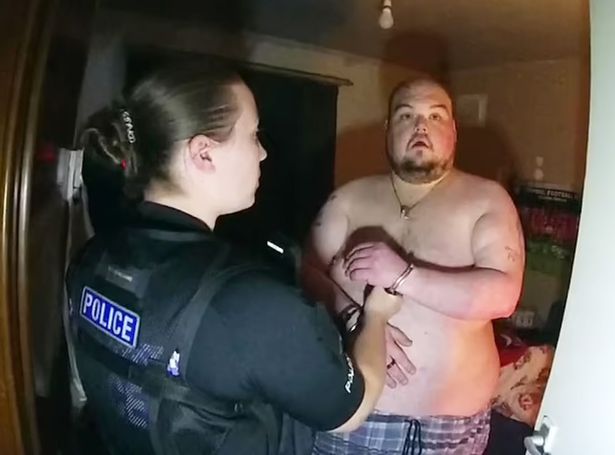
In the upcoming feature, a forensic psychologist looks at Plumb’s life before his obsession with Holly began and what helped enable his sick fantasies. Speaking on the Channel 5 documentary, Kerry Daynes says: “Plum’s obsession with Holly Willoughby starts in around 2014. This is the time when he is more housebound and he’s spending a lot of his time just sitting and watching television.
“So she’s a regular feature on his television set and familiar, probably sees more of Holly Willoughby than then it does of any other woman apart from his mother. And of course, she’s a beautiful girl. I’m sure a lot of men fancy Holly Willoughby, but for him it becomes something more. It becomes an infatuation.”
She adds: “Most people who are infatuated by celebrities would like to meet them. They admire them. They wish good things for that celebrity. They are a fan. That’s not what we’re talking about here. It progresses from there into looking her up on the internet, starting to collect images of her. And then it goes into darker territory. He’s having sexual fantasies, about Holly Willoughby. He wants indulge those in a different way. So he goes looking for deep fake images of Holly.”
Philip Grindell, a former Metropolitan Police officer then shares how we are “seeing an increase in deepfake images and videos. Effectively, what it is, is somebody taking an image and putting somebody else’s face or head onto that image.”
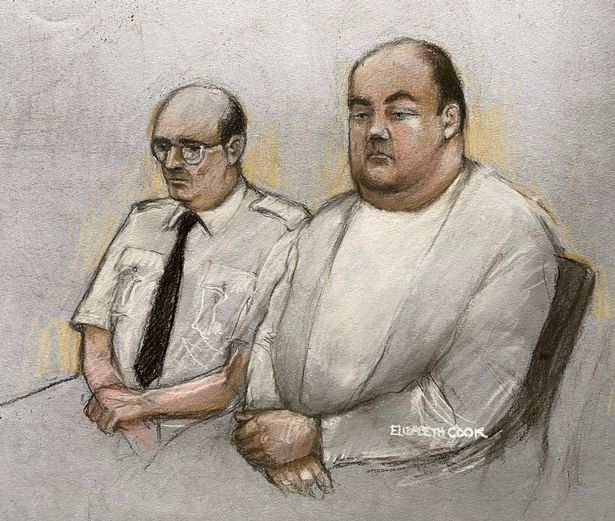
Kerry continues: “A lot of deepfakes involve portraying that person in some sort of sexual context, and 99% of victims of deepfake pornography are female. And you’ve not consented to this. A lot of victims of deepfake say that when they have viewed deepfake images of themselves, it has felt like a sexual assault.”
In January this year, Holly broke her silence on the horrifying plot to kidnap, rape and murder her. She told The Sunday Times magazine: “It’s been a tough one. There’s no way of sugarcoating it.”
The Dancing On Ice presenter also said that “nothing can prepare you for something like that”, and you need to “decide, I can take this on board and it can absolutely affect all aspects of my life, or I can make a choice to go, let’s focus on everything that’s positive and good, all those important things”.
“I’m healthy and I’m happy,” she added. “I’ve got a wonderful husband and children and family, I’ve got great friends. You have to go: I choose to positively move forward and rely on all those people – the police, the court, the judge, the jury – all those people to do their role. And that’s what I had to do.”
Holly also said she never felt she would crumble as it was “not an option”, and that “so many people go through tough things, they just do”. She said that “every single person I speak to, and it seems more and more currently, are going through something”.
“I think that, although I wouldn’t wish what happened to me on anybody at all, sometimes things go wrong, but you have to keep going for it because that’s all you can do,” she added.
Holly said it was “really simple and easy” to step away from This Morning, and she would “be an idiot if” money was not important to her working in TV. However, she said it was not the reason she works in the field, where she presents Netflix series Celebrity Bear Hunt, but by “definition my work is a business”.
She added: “I’m not going to shy away from saying that. I think, sometimes, when women earn money people see it as a greedy, ambitious thing, but when men earn money? ‘Oh, he’s incredible, I want to be like him’. I don’t have any shame in saying it’s my business, it’s my work. It’s also all I have known. It’s what I do.”
*The Plot To Kill Holly Willoughby airs Thursday 1st May at 9pm on 5.
Like this story? For more of the latest showbiz news and gossip, follow Mirror Celebs on TikTok, Snapchat, Instagram, Twitter, Facebook, YouTube and Threads.
Millions of Canadians are queuing up to cast their ballots on Monday in the country’s 45th election to select a new government.
The elections are taking place in the shadow of a trade war with the United States, and at a time of economic uncertainty in the world’s second-largest nation by area.
As of Friday, a record 7.3 million out of 28.9 million eligible voters had already cast their advance votes, according to Elections Canada.
Here is what to know about the election and what is at stake.
The first polls in Canada opened at 8:30am on Monday (11:00 GMT) in the eastern province of Newfoundland. The last set of polls to open will be across the westernmost province of British Columbia, at 7am local time (14:00 GMT).
In each of Canada’s six time zones, voting centres will remain open for 12 hours.
At 7pm on Monday (02:00 GMT, Tuesday), British Columbia will be the last to see ballots sealed.
Ballot counting begins immediately after polls close in each respective time zone.
Initial results from regions where polls close earlier, including Newfoundland, could be available by about 8:30pm (23:00 GMT).
Elections Canada, an independent, nonpartisan government agency, says it expects to count the “vast majority” of votes on election night. Preliminary results then typically become available as Canadian media outlets announce winners based on their independent analysis.
Elections Canada posts final, official results about six months after the end of election day.
Each eligible voter is assigned a polling station based on their home address, which they can find by entering their postal code on the Elections Canada website.
At the polling station, they prove their identity and address with a government-issued ID, such as a driver’s licence, to receive a ballot paper. They then mark the circle next to the name of the candidate they want to vote for; the candidate with the most votes wins in that electoral area or “riding”, becoming a member of parliament (MP).
The party that gets the most MPs usually forms the government, and its leader becomes the prime minister. Canadians do not vote directly for the prime minister.
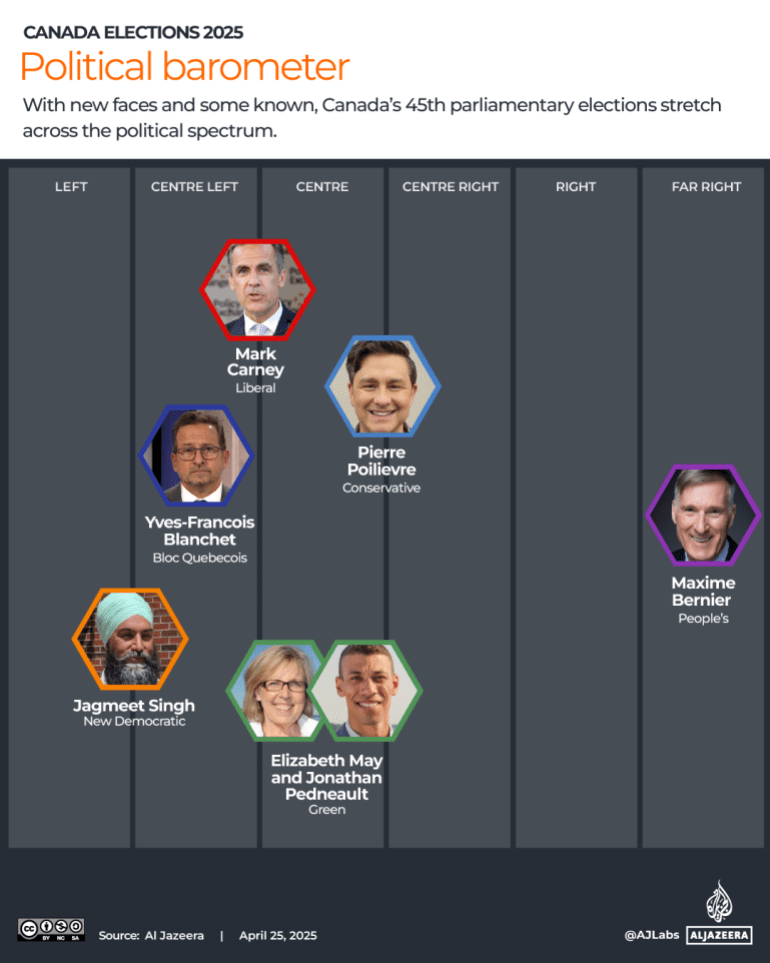
Canada has four main federal political parties.
The Liberal Party has governed Canada most frequently, winning most elections since the country was founded in 1867. Its main rival is the Conservative Party (and earlier conservative parties such as the old “Progressive Conservatives”), which has also won several times.
The Liberals have been in power since 2015, headed by Justin Trudeau until he stepped down in January. The current interim prime minister, Mark Carney, is now one of this year’s top candidates. He is facing off against the Conservative and official opposition leader, Pierre Poilievre, an MP from the Ottawa area who is known for his populist style.
They are also competing against the more left-leaning New Democratic Party (NDP), led by Jagmeet Singh. The NDP held 24 seats in the outgoing House of Commons — the lower house of Parliament — and had been supporting the Liberals in a minority government deal. That partnership, however, ended last September. Their best result has been being the official opposition once after the 2011 election.
Bloc Quebecois has 33 seats in the outgoing house and is led by Yves-Francois Blanchet. However, it fields candidates only in French-speaking Quebec and is focused on promoting the province’s interests. There is also the Green Party and right-wing People’s Party, but they are much smaller and are not projected to make significant gains this election.
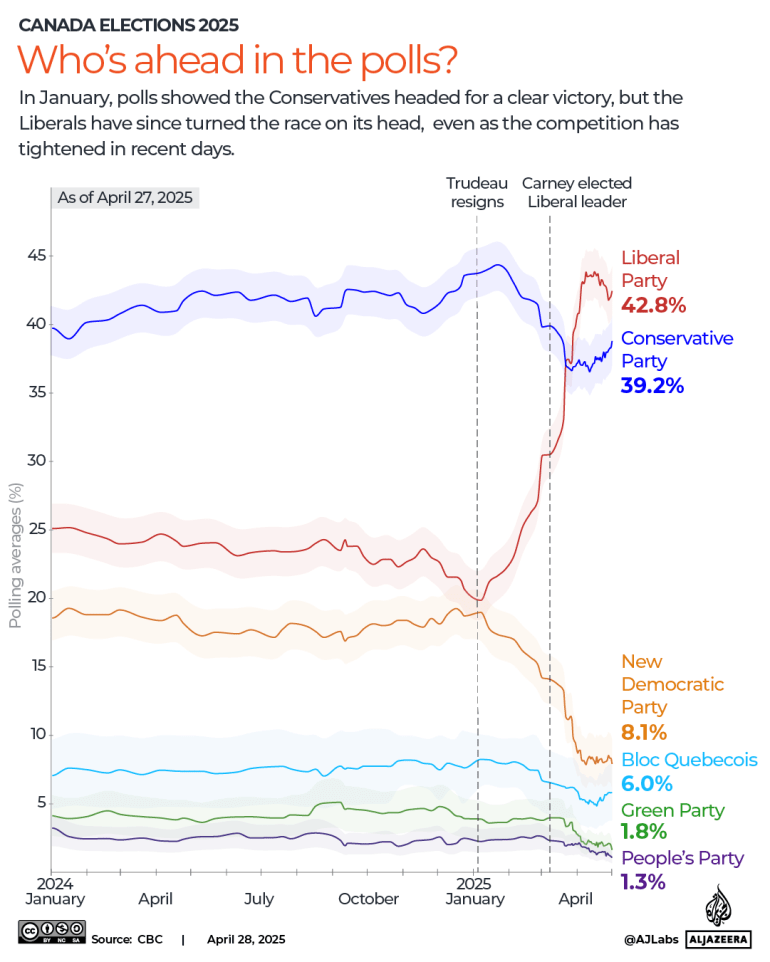
Until mid-January, Poilievre-led Conservatives held a commanding lead of up to 26 percentage points over the Liberals, putting them on track to shift the tide of power this year with a majority government.
However, their popularity has since fallen, while the Liberal Party has soared. Currently, polls show that the Liberals are ahead of the Conservatives in a close race.
The Canadian Broadcasting Company Poll Tracker, which aggregates national polling data, had the Liberals with 42.8 percent support, compared with the 39.2 percent for the Conservatives on the eve of the election on Sunday.
The NDP was in third with 8.1 percent, followed by the Bloc Quebecois at 6 percent. The Greens had 1.8 percent and the People’s Party had 1.3 percent.
The dramatic shift follows Trudeau’s resignation and Carney’s rise as Liberal leader, as well as rising concerns over US President Donald Trump’s aggressive approach towards Canada.
A poll from research firm Ipsos on March 20 found that 41 percent of respondents trusted Carney to handle Trump, compared with 31 percent for Poilievre. The poll showed 43 percent believed Poilievre would “roll over and accept” Trump’s demands — almost twice as many as those who felt the same about Carney.
Poilievre and other opposition leaders had built their election campaign on affordability issues such as rising grocery and housing costs.
But experts say Trump’s tariffs and threats to make Canada the “51st state” of the US shifted the campaign’s focus — what matters most to many in Canada now is who they think can best stand up to Washington.
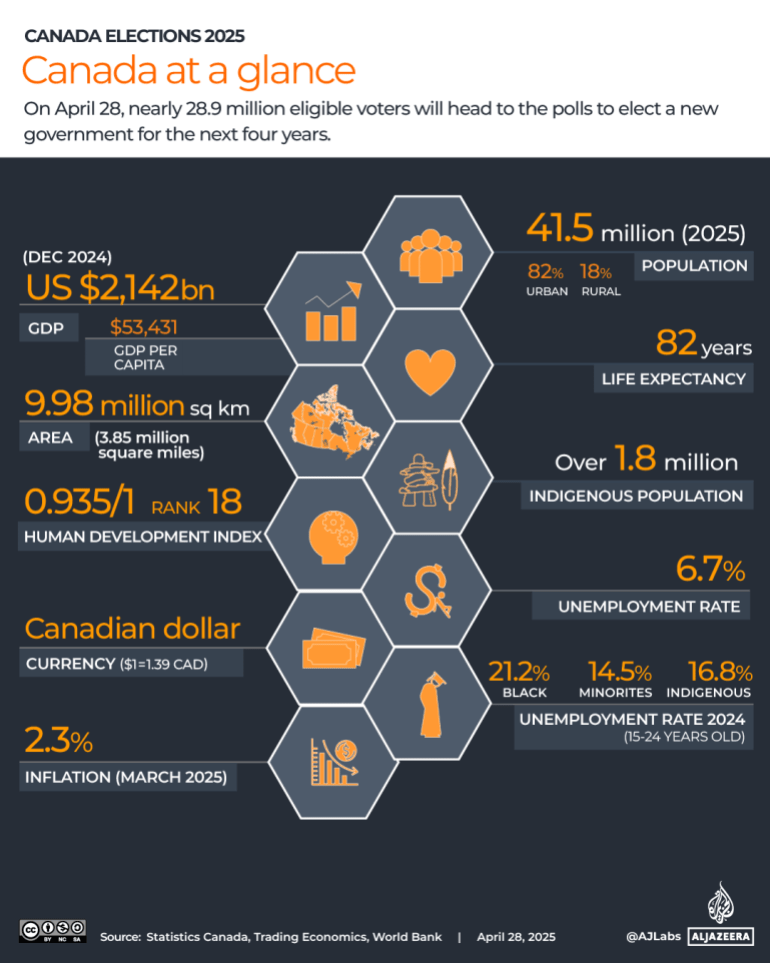
This year, more than 28.9 million Canadians are eligible to cast their ballots from 10 provinces and three territories to elect the 45th parliament.
They are living in a country of about 41.5 million, where most people reside in urban areas. Quality of life for them is generally considered high as Canada ranks 18th in the world on the Human Development Index, with an average life expectancy of 82 years.
Economically, Canada’s gross domestic product is one of the top 15 in the world at $2.14 trillion. The Canadian dollar is stable, and inflation was relatively low at 2.3 percent in March.
However, costs are rising as opportunities decline. The unemployment rate in March was 6.7 percent, when the country shed 32,600 jobs. This was the first decrease in more than three years, driven by a sharp decline in full-time roles, according to Statistics Canada. Among young people, unemployment was especially high in 2024 and primarily affected Black and Indigenous youth, as well as other minorities.
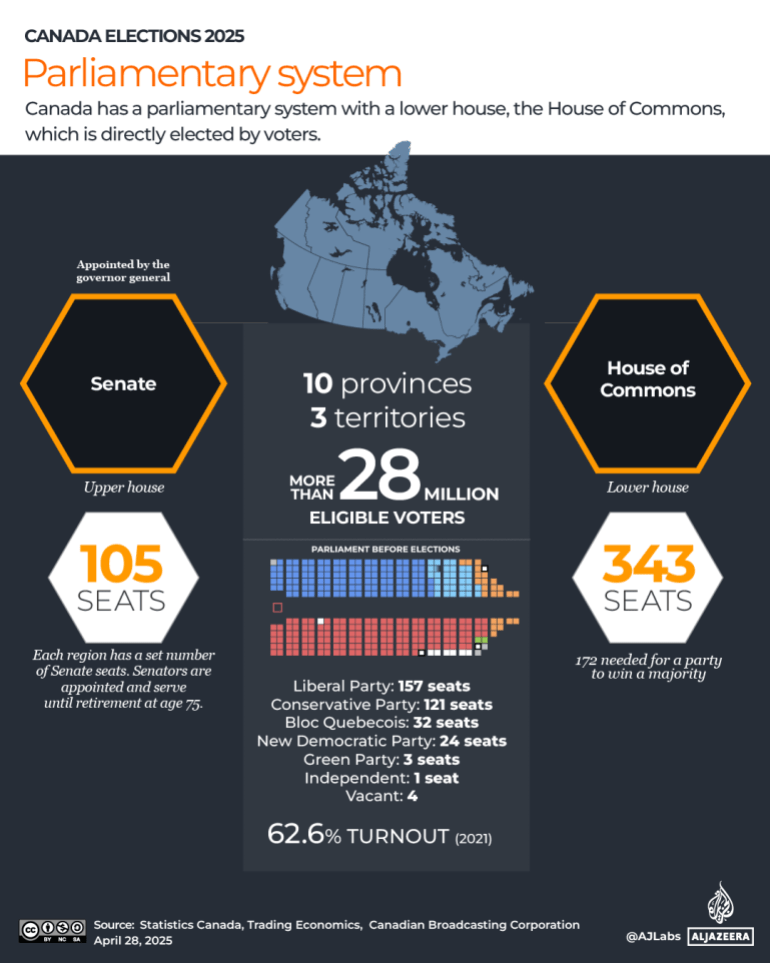
Canada is a parliamentary democracy, which means laws are made and decisions are taken by an elected parliament. As it is also a constitutional monarchy, Britain’s King Charles III serves as a ceremonial head of state, and his governor general formally signs off on laws passed by Parliament.
Eligible citizens elect members of the House of Commons. If a party secures a majority by winning at least 172 seats, it forms a majority government. If it wins fewer than that, it can still form a minority government with support from other parties.
There is also an upper house of parliament, the Senate, members of which are appointed by the prime minister. Its main job is to review, suggest changes to, and approve laws passed by the House of Commons.
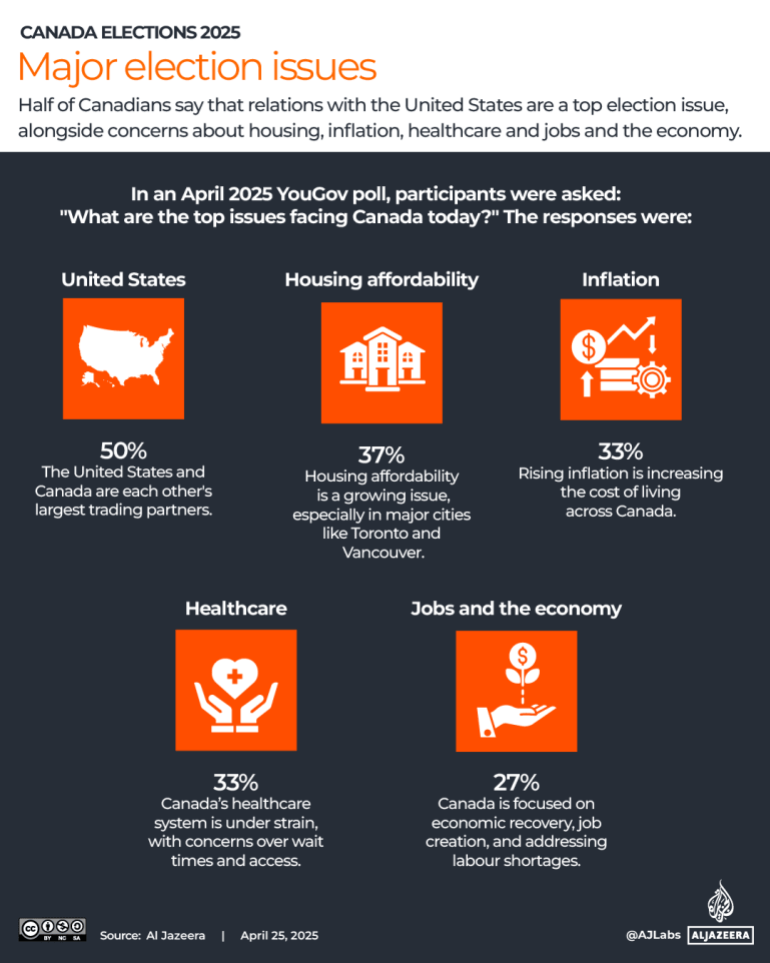
Trump’s tariffs — some imposed, others threatened — on Canadian goods have reshaped domestic politics and public opinion. A March YouGov poll found that nearly half of Canadians now rank US-Canada relations as their top concern.
This was followed by housing worries. Immigration numbers dropped during 2020, but surged again in 2021 as the economy reopened, with an influx of workers and students on temporary visas. Since 2020, average rent across Canada has risen by 18 percent.
At least 33 percent of Canadians say inflation and healthcare are also important issues. Consumer prices are climbing sharply, and inflation is projected to rise further due to the US tariffs, according to Statistics Canada.
Canadians say access to affordable healthcare is difficult, with increasing wait times or having to pay out of pocket for essential health services. The median wait for a referral from a general practitioner reached 27.7 weeks in 2024, up from the 20.9 weeks in 2019, according to the Fraser Institute, a libertarian-conservative Canadian public policy think tank. According to local media reports, 6.5 million Canadians are without a family doctor, and a third of them struggle to get appointments.
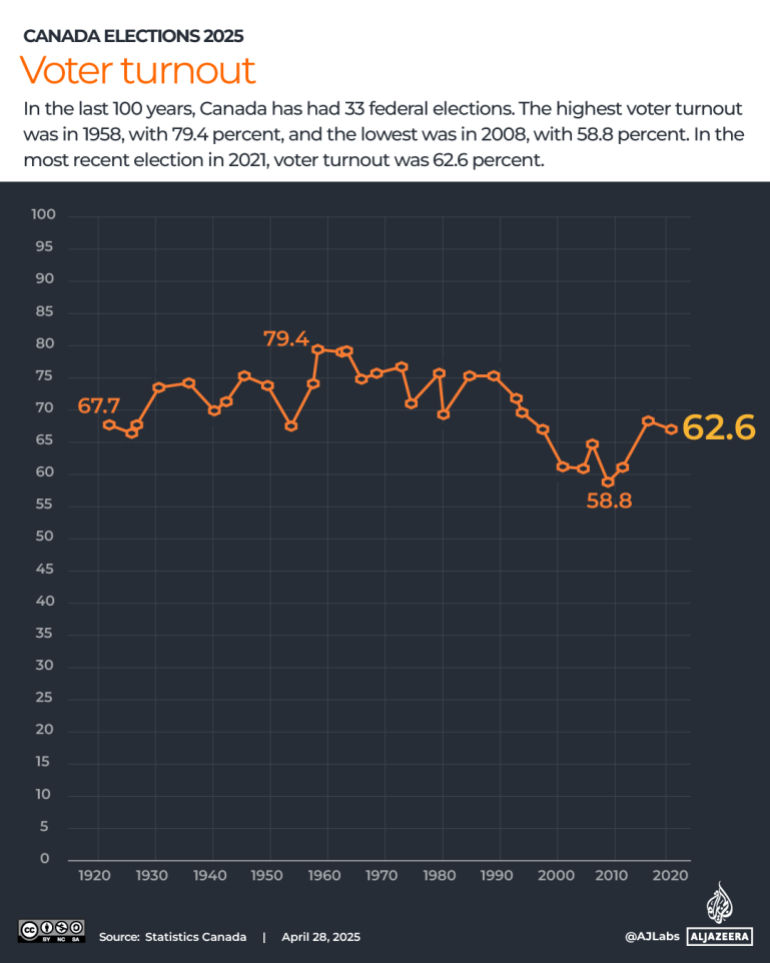
According to the International Institute for Democracy and Electoral Assistance, the global average voter turnout in national elections in 2023 dropped to 55 percent from 65.2 percent in 2008. Canada is well above the global average, with the 2021 election turnout at 62.6 percent.
In the last 100 years, Canada has had 33 elections, and its highest voter turnout was in 1958 at 79.4 percent. The lowest national turnout was 58.5 percent in 2011.
This year’s 7.3 million advance votes surpassed the previous record of 5.8 million, cast during the 2021 election.
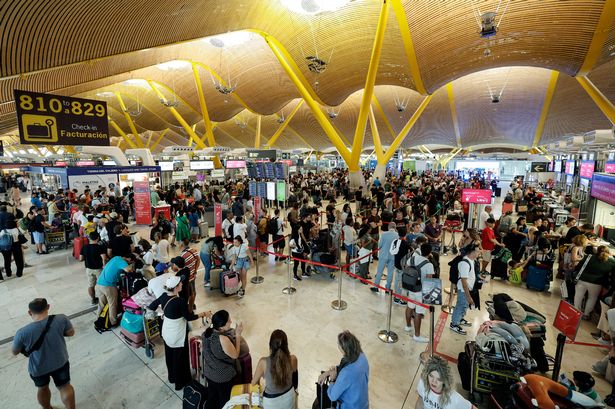
A major power outage has been reported in Spain and Portugal, including their capital cities, with the cause of the blackout currently unknown. Train stations and aiports have been impacted
Source link